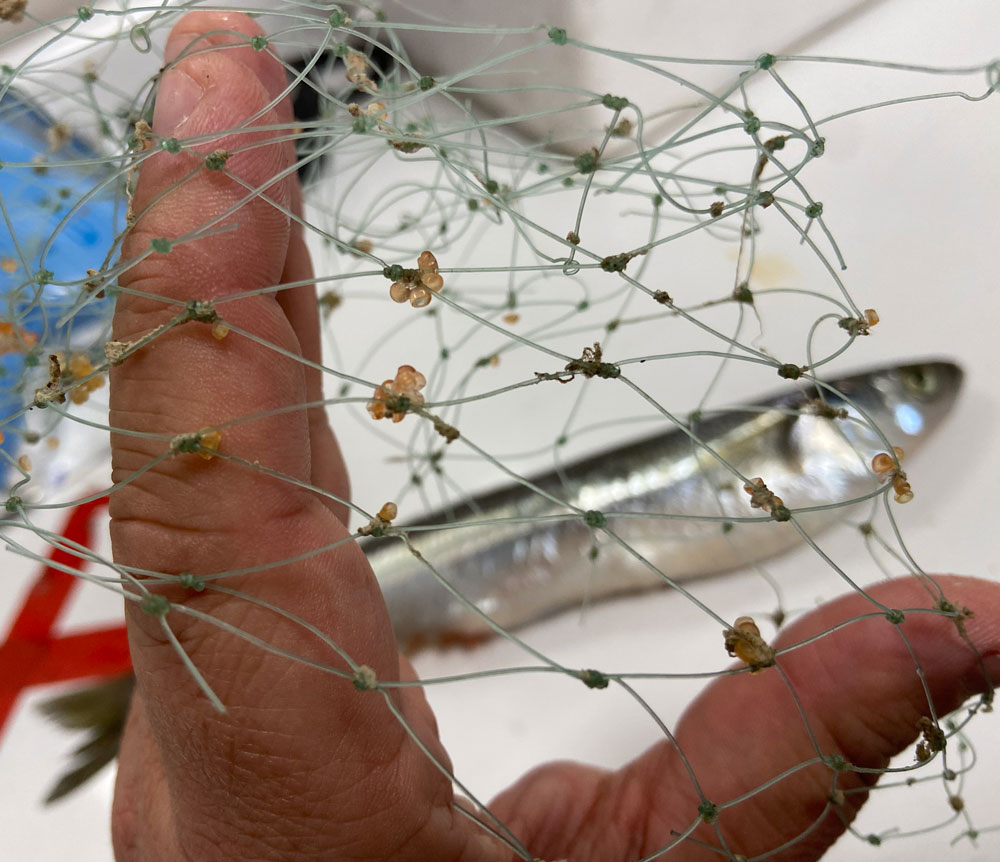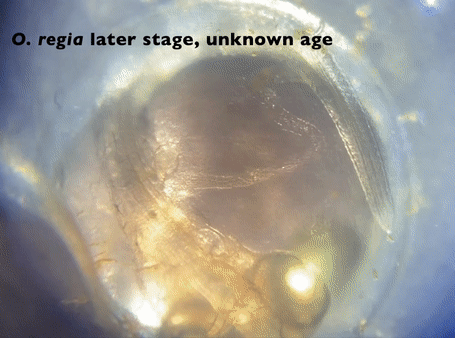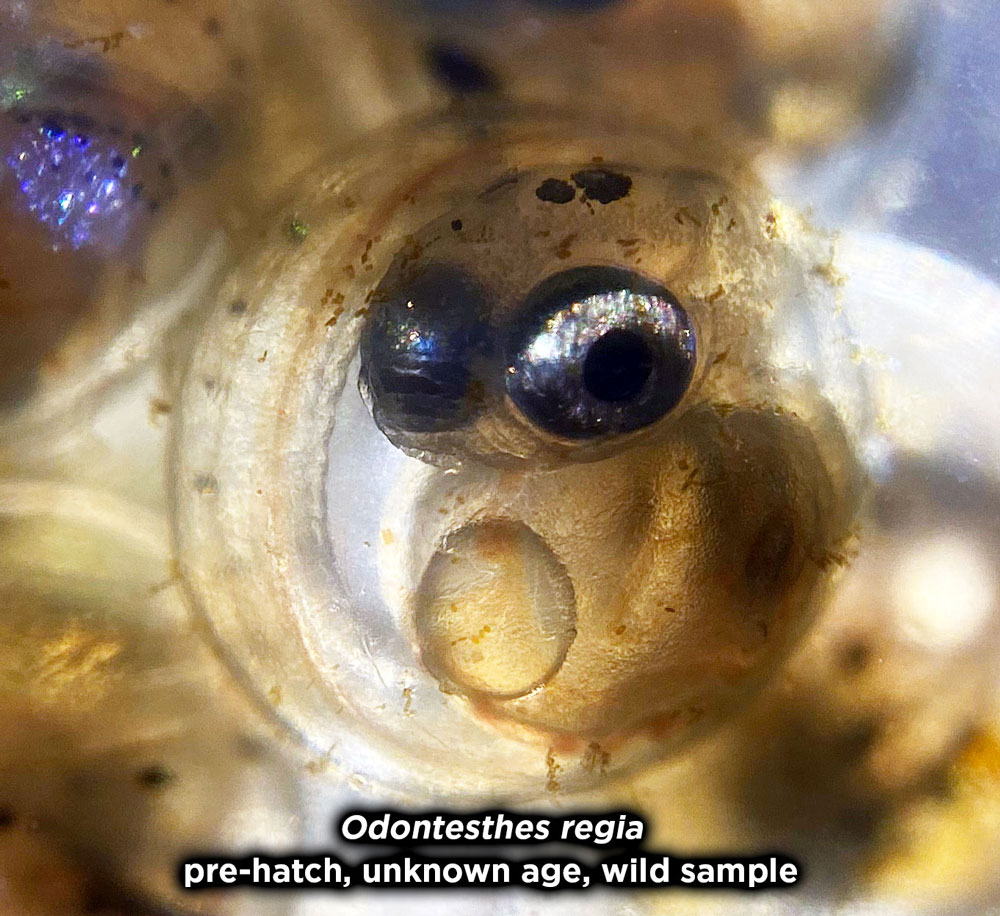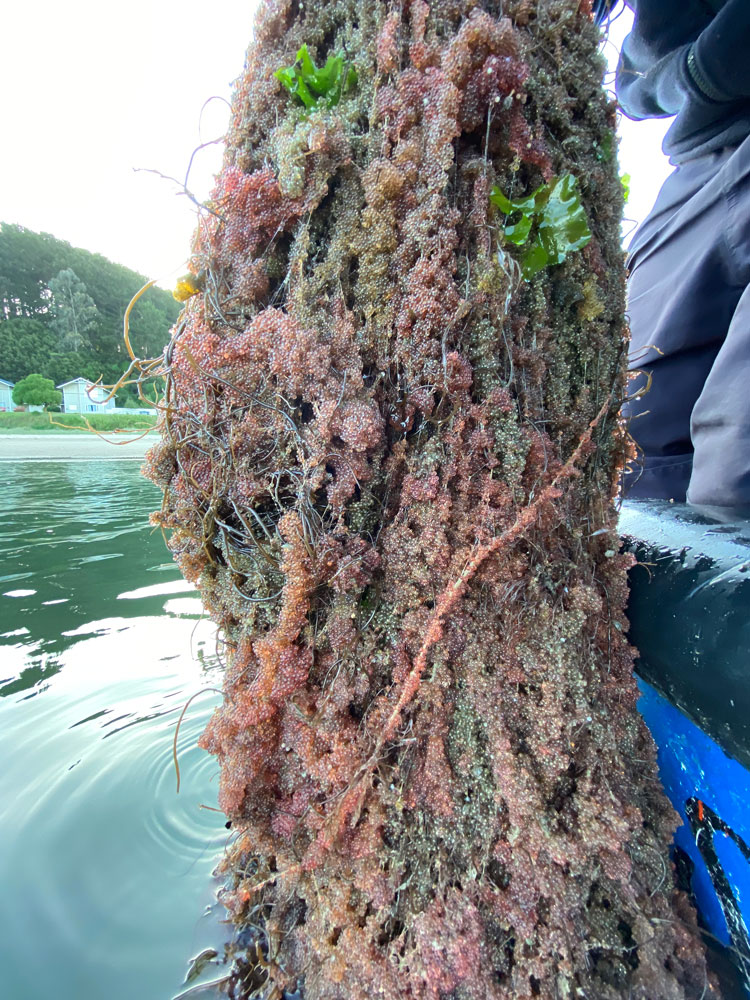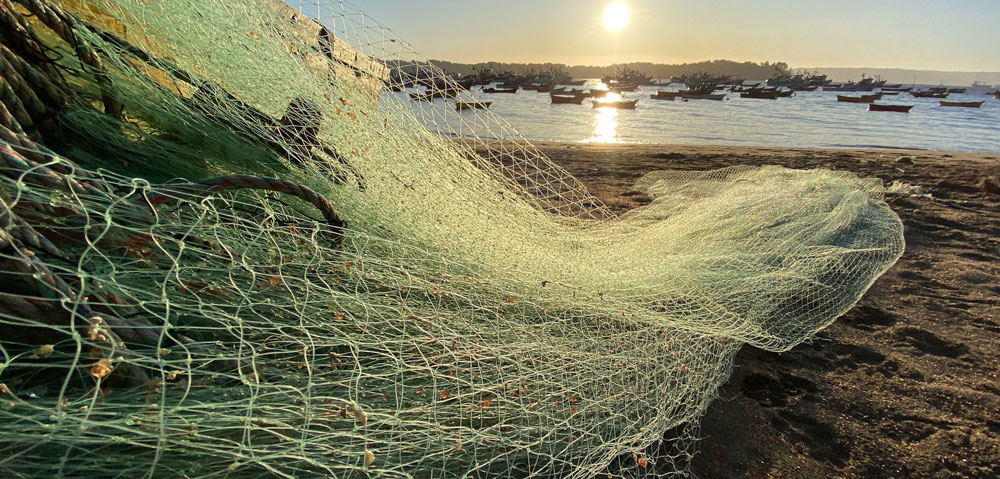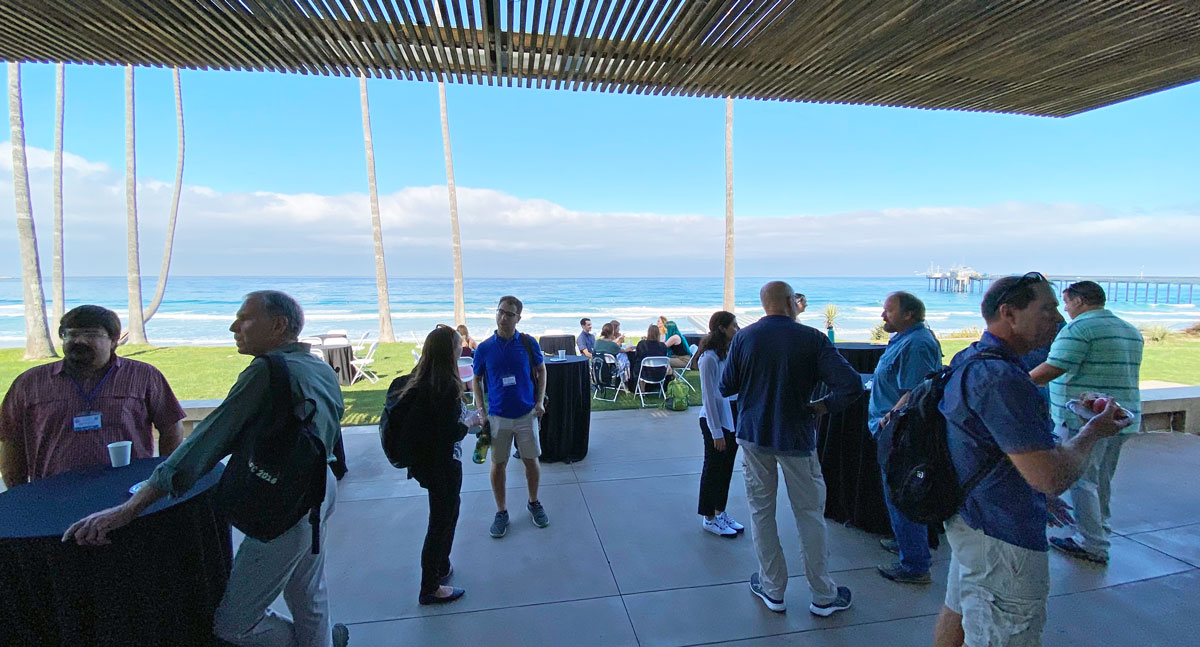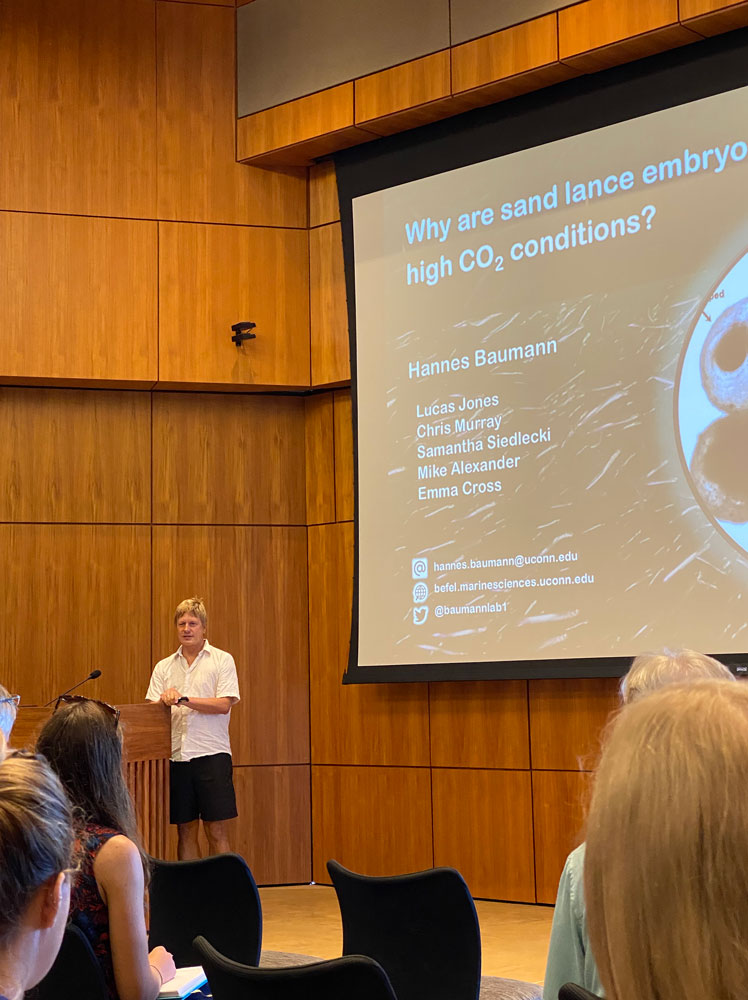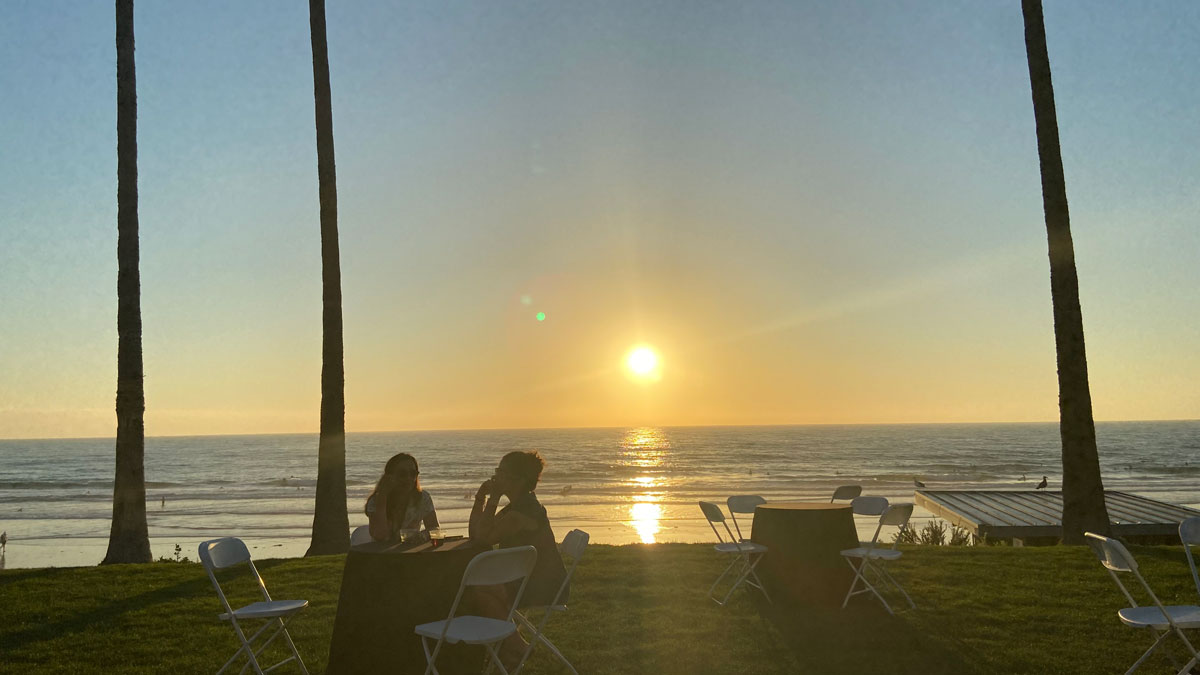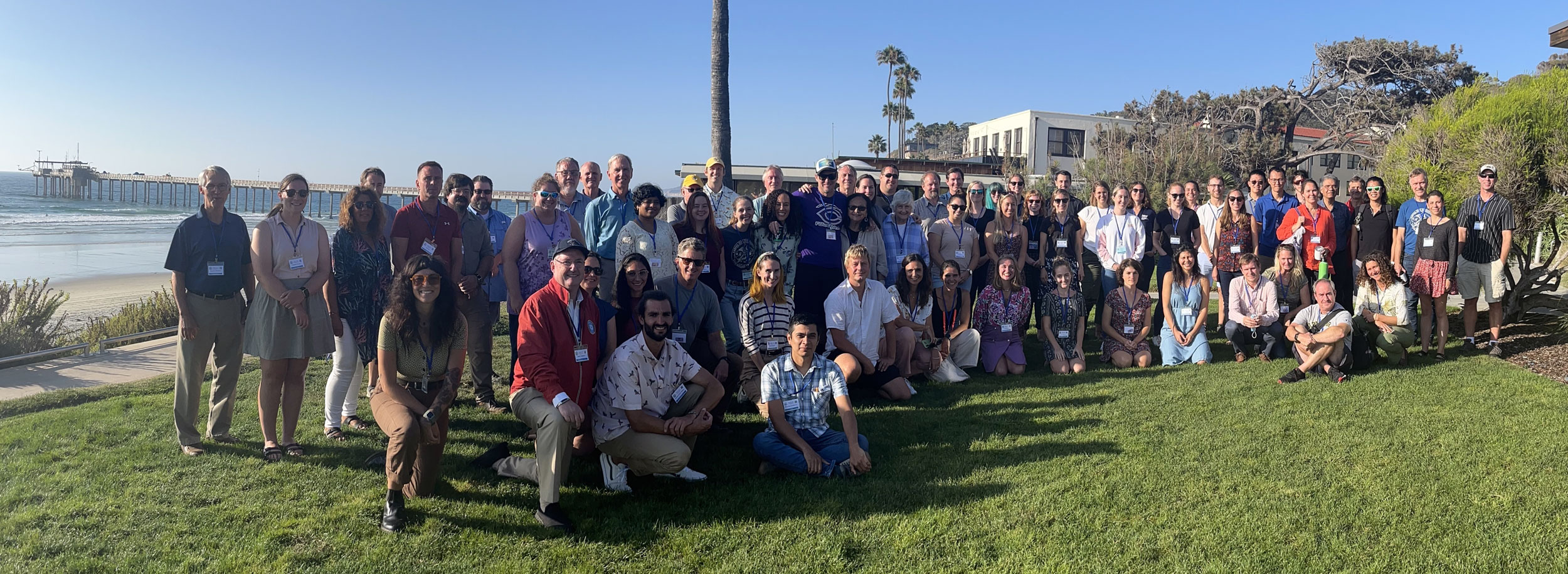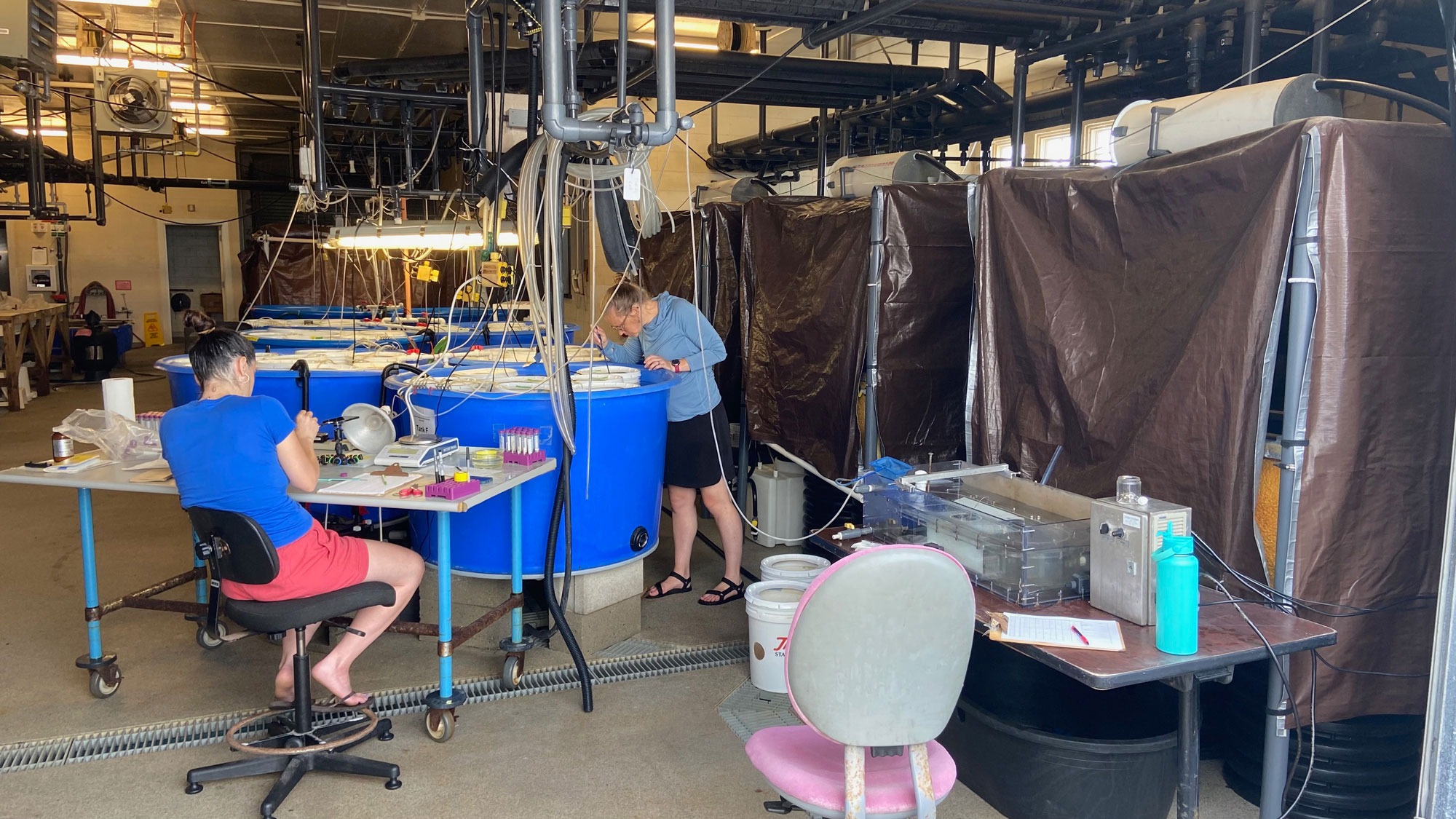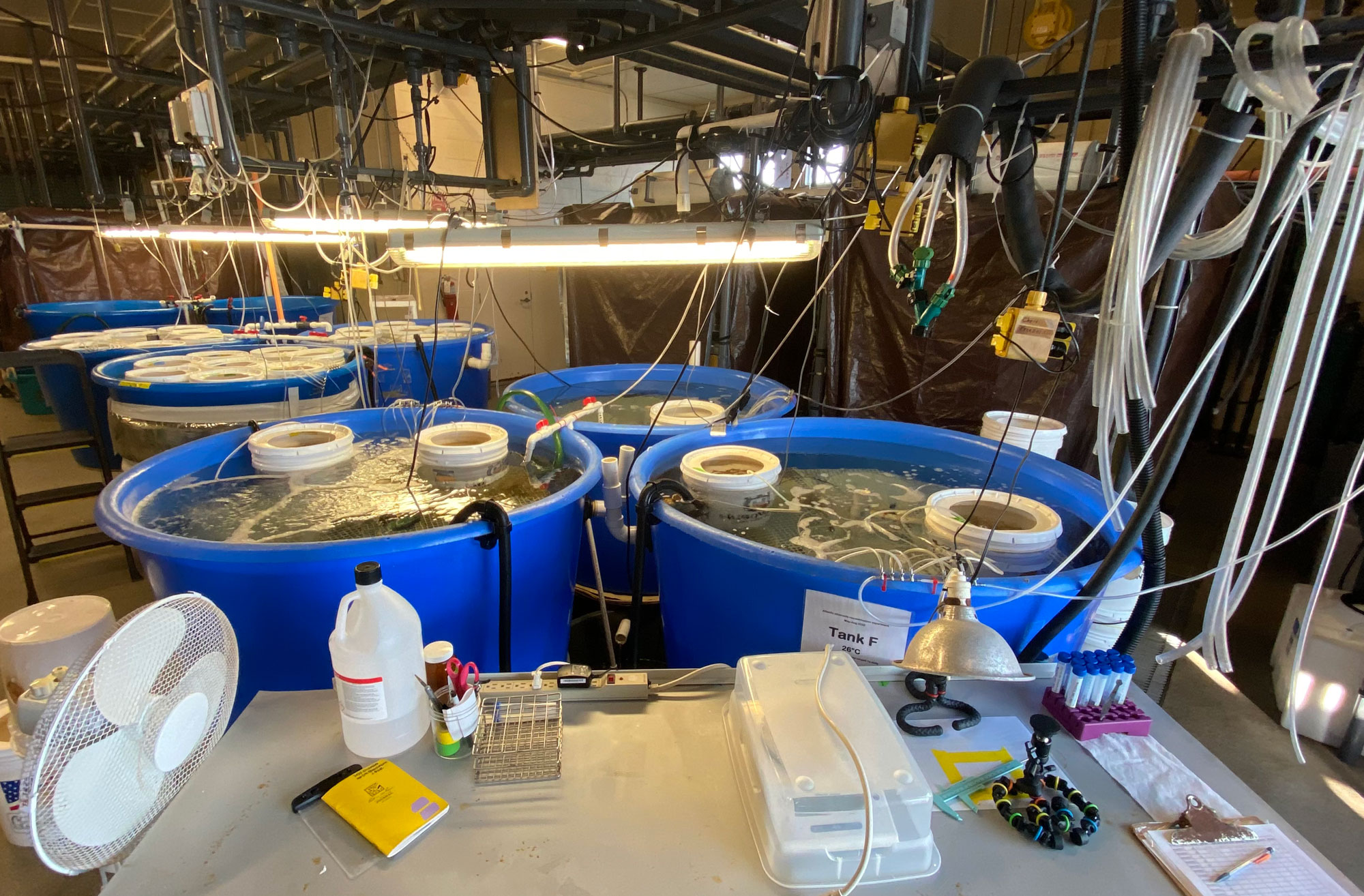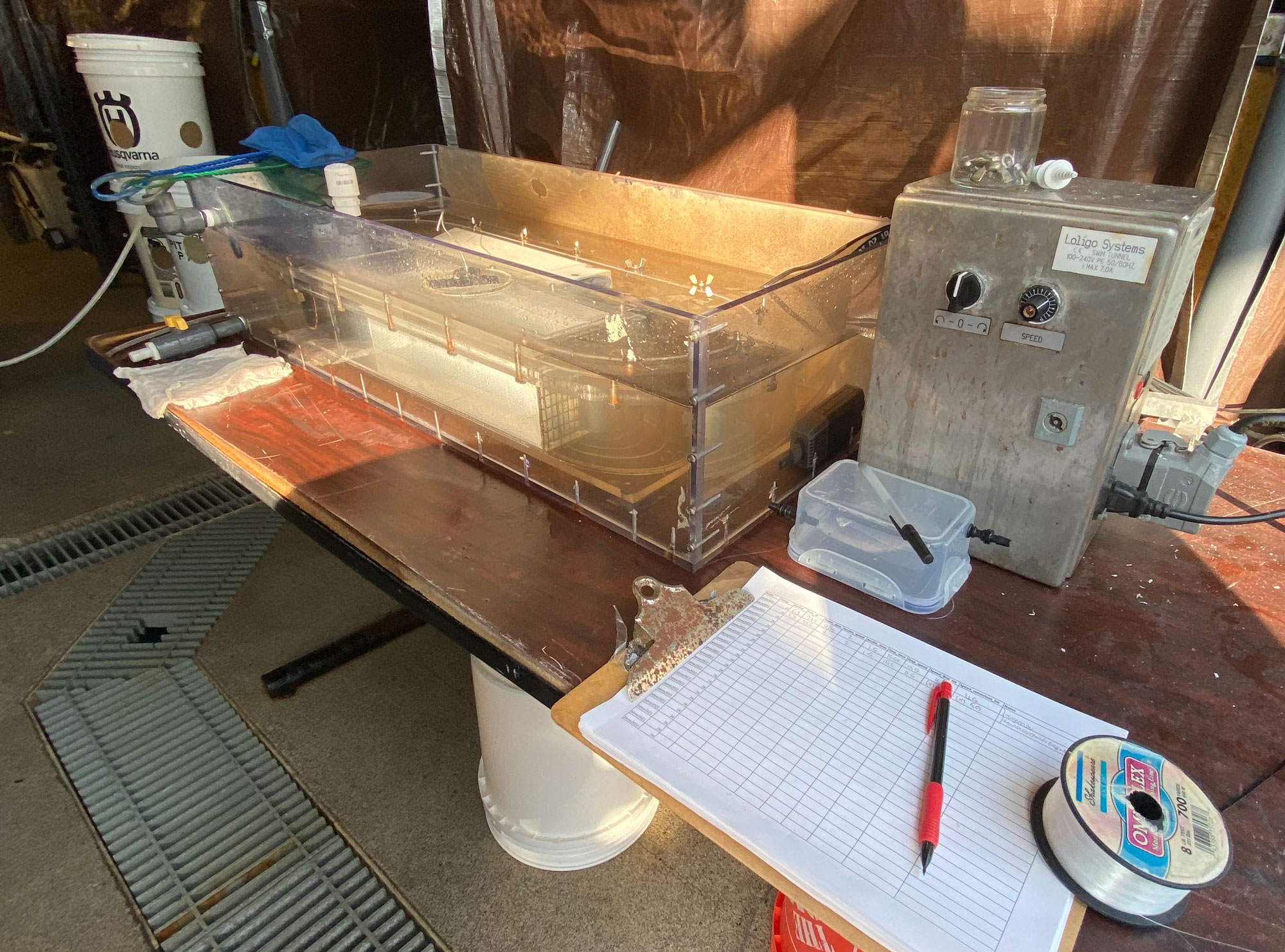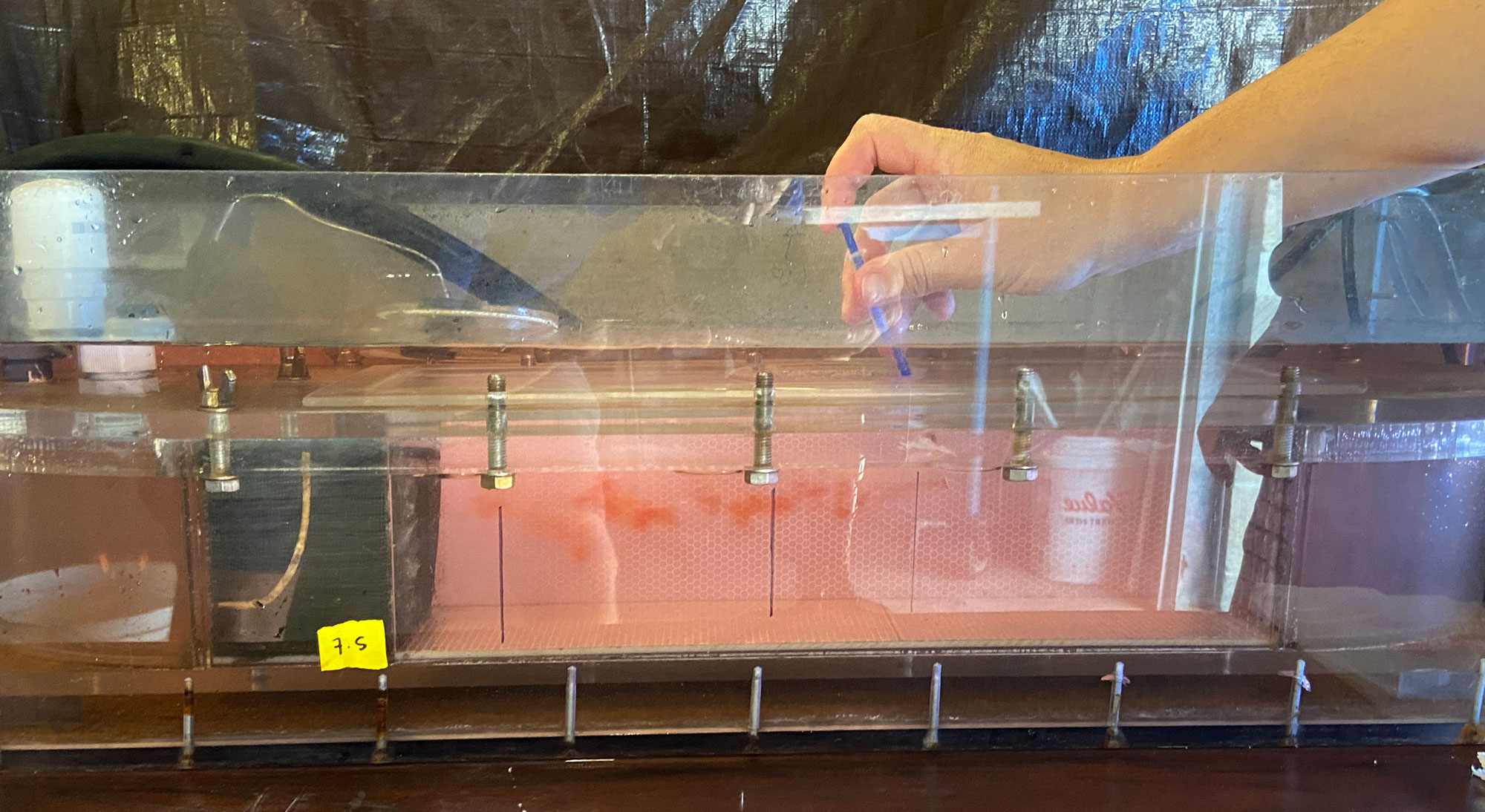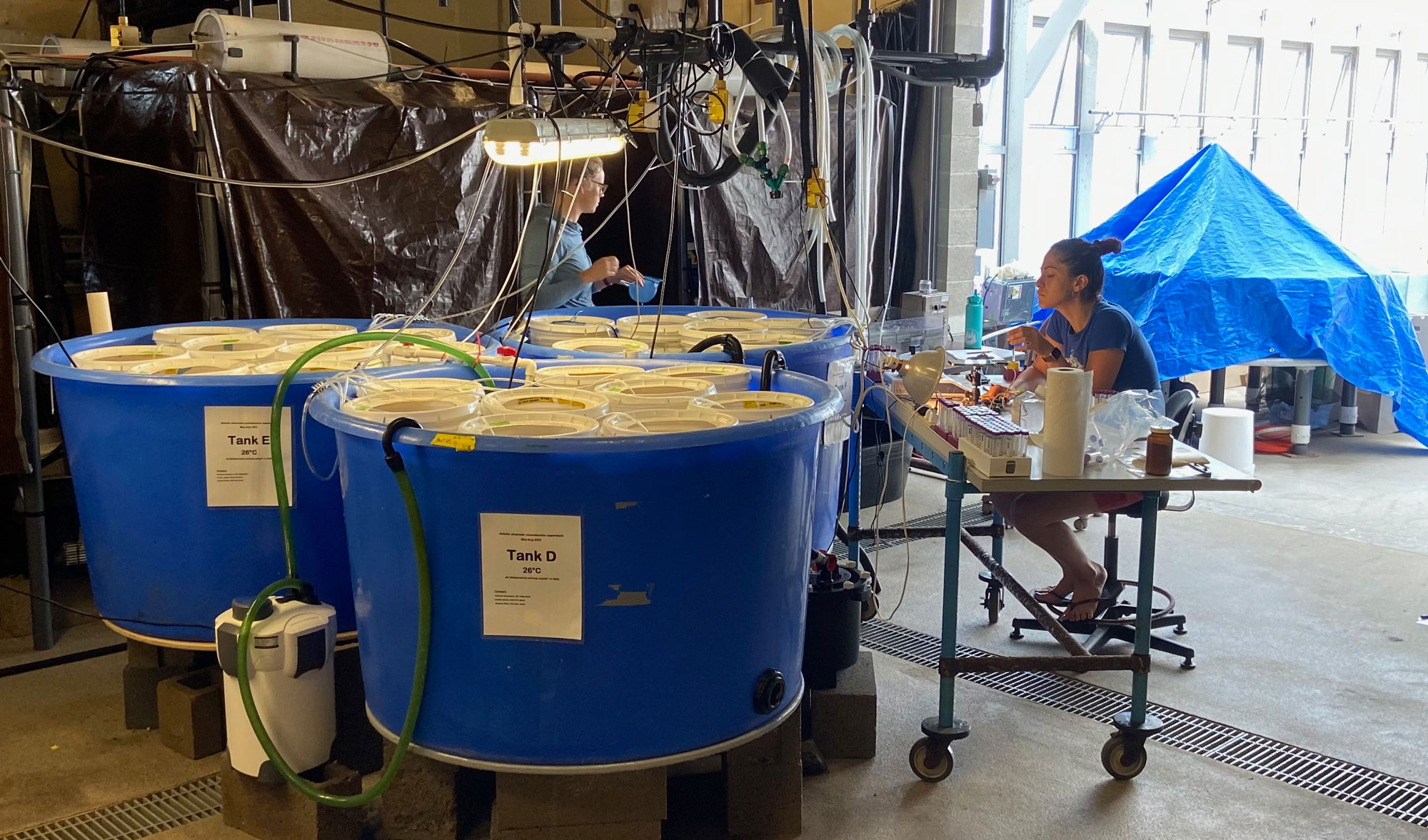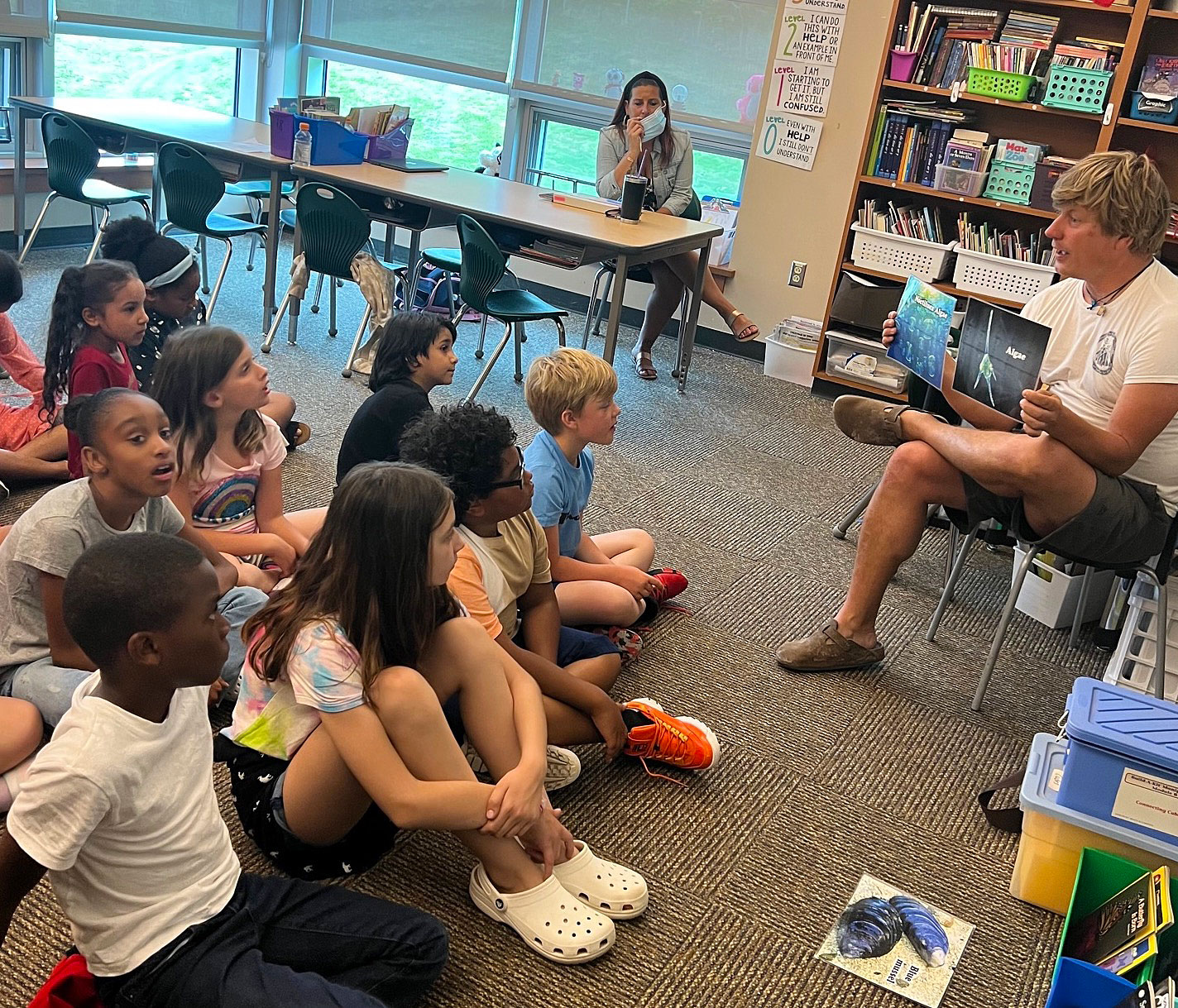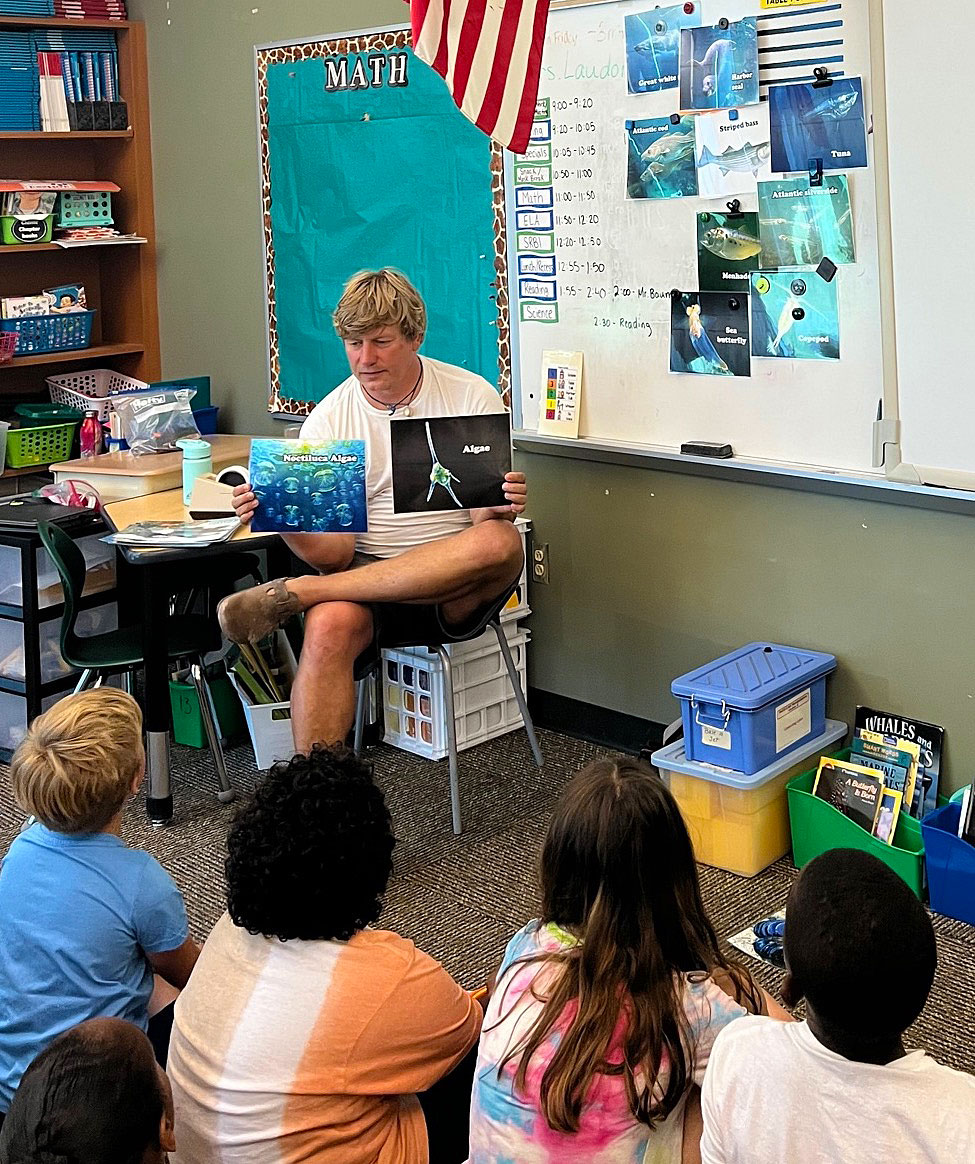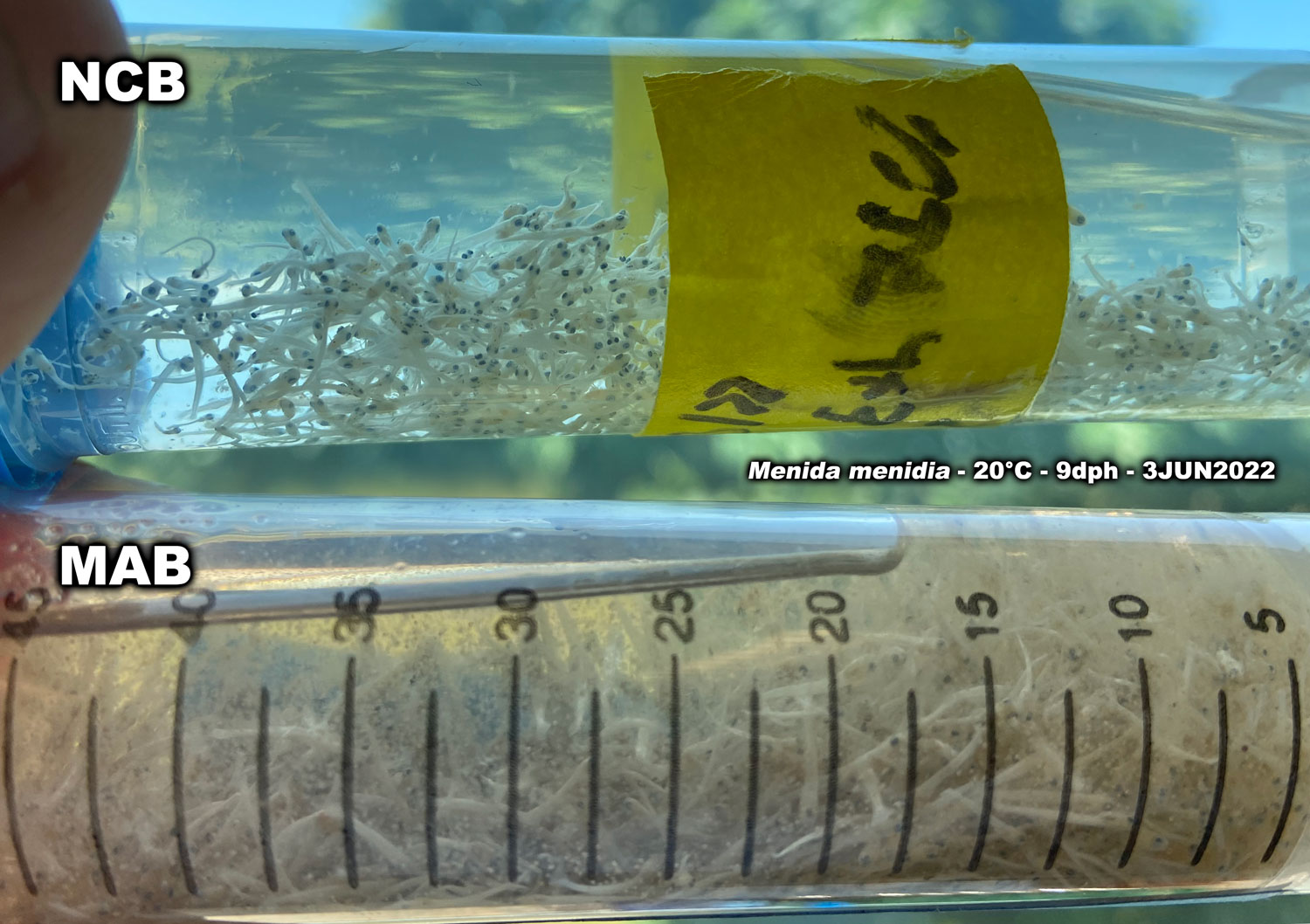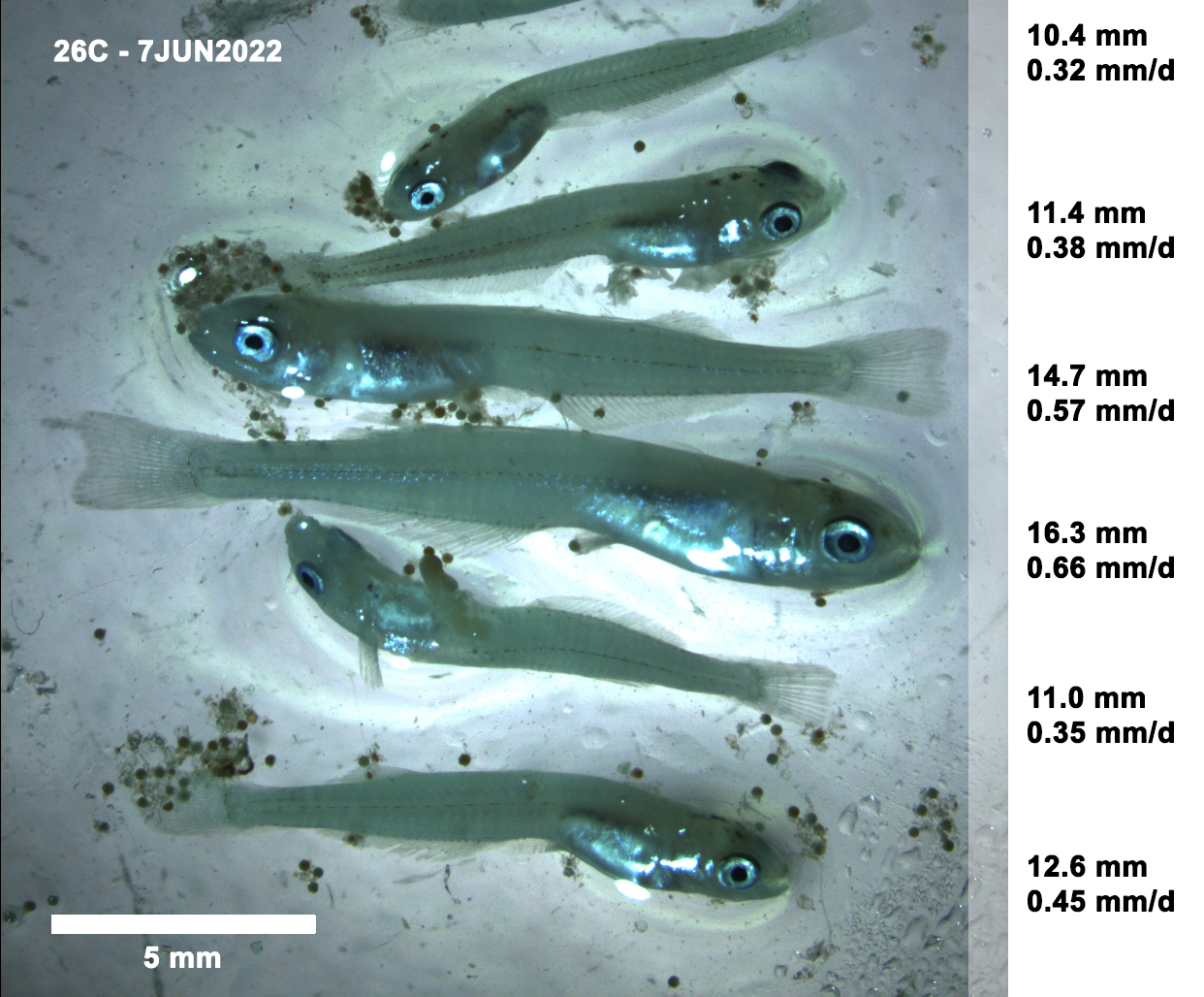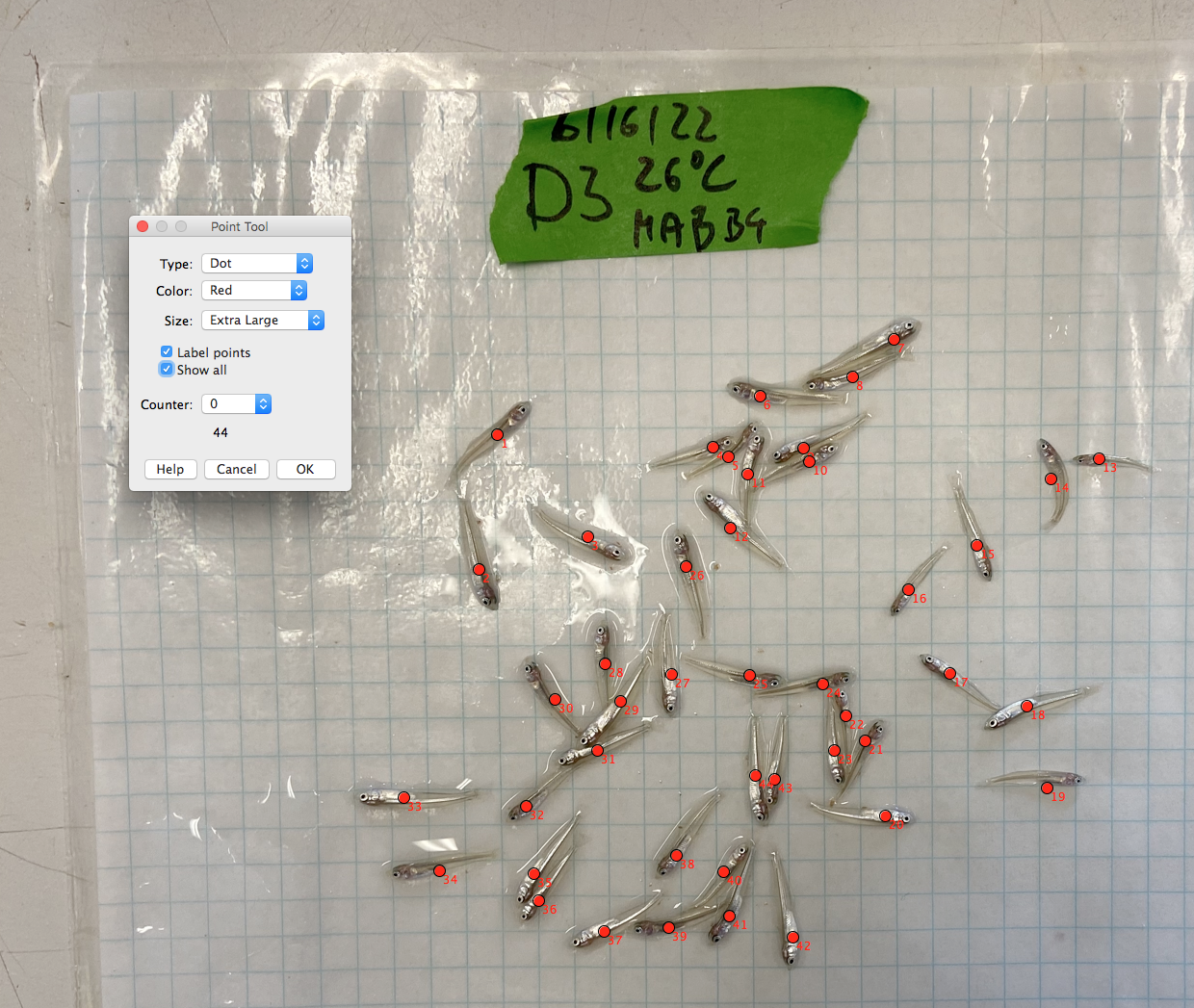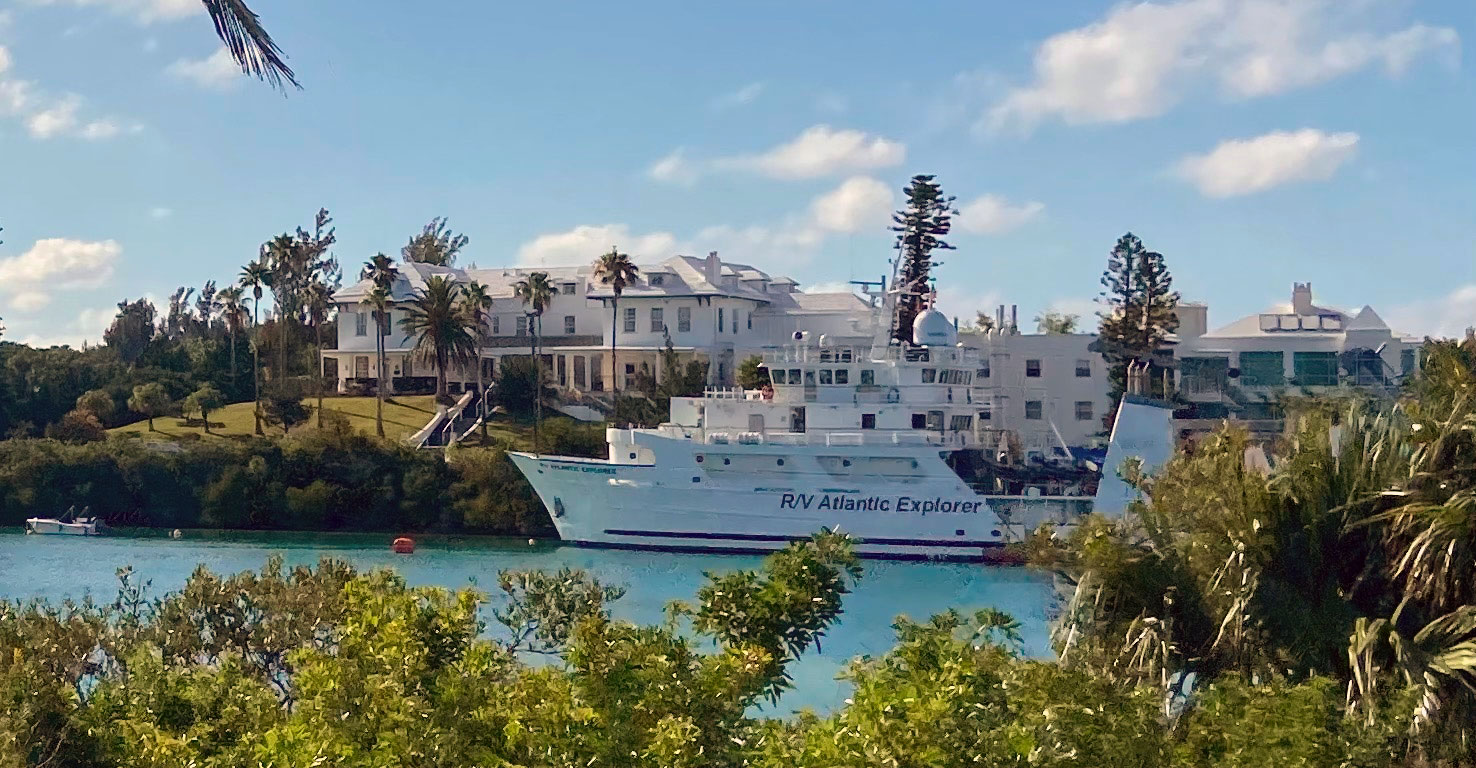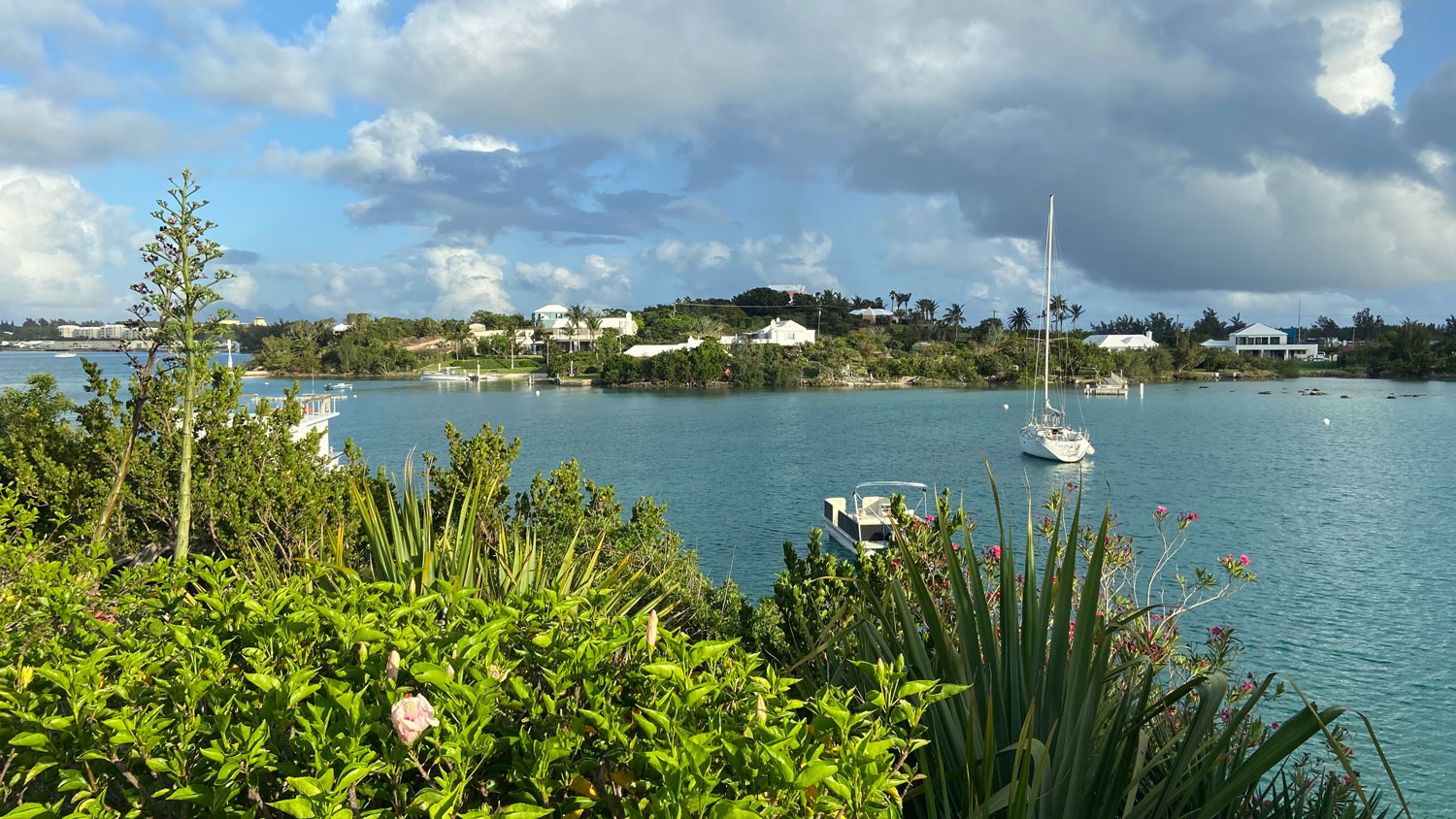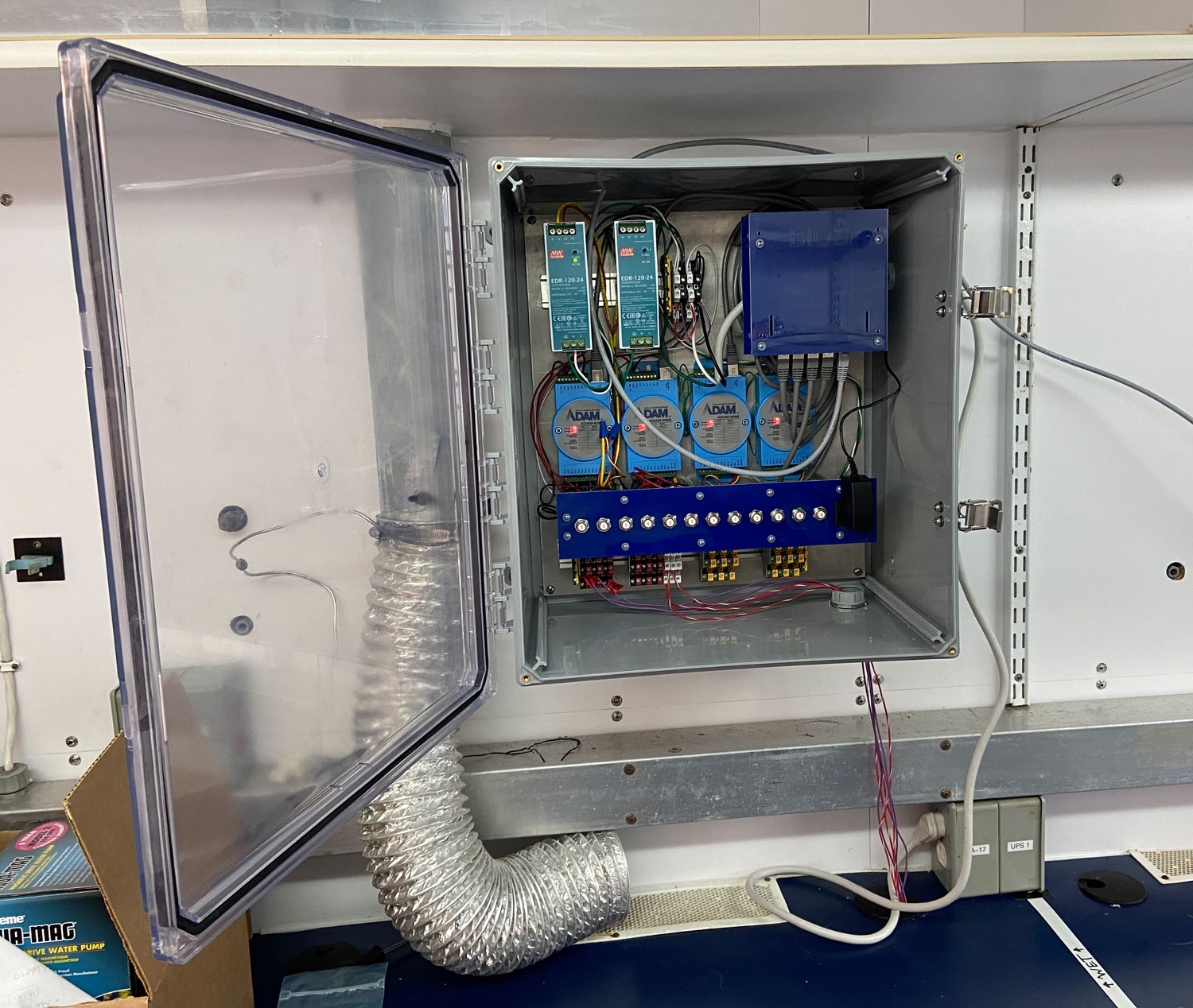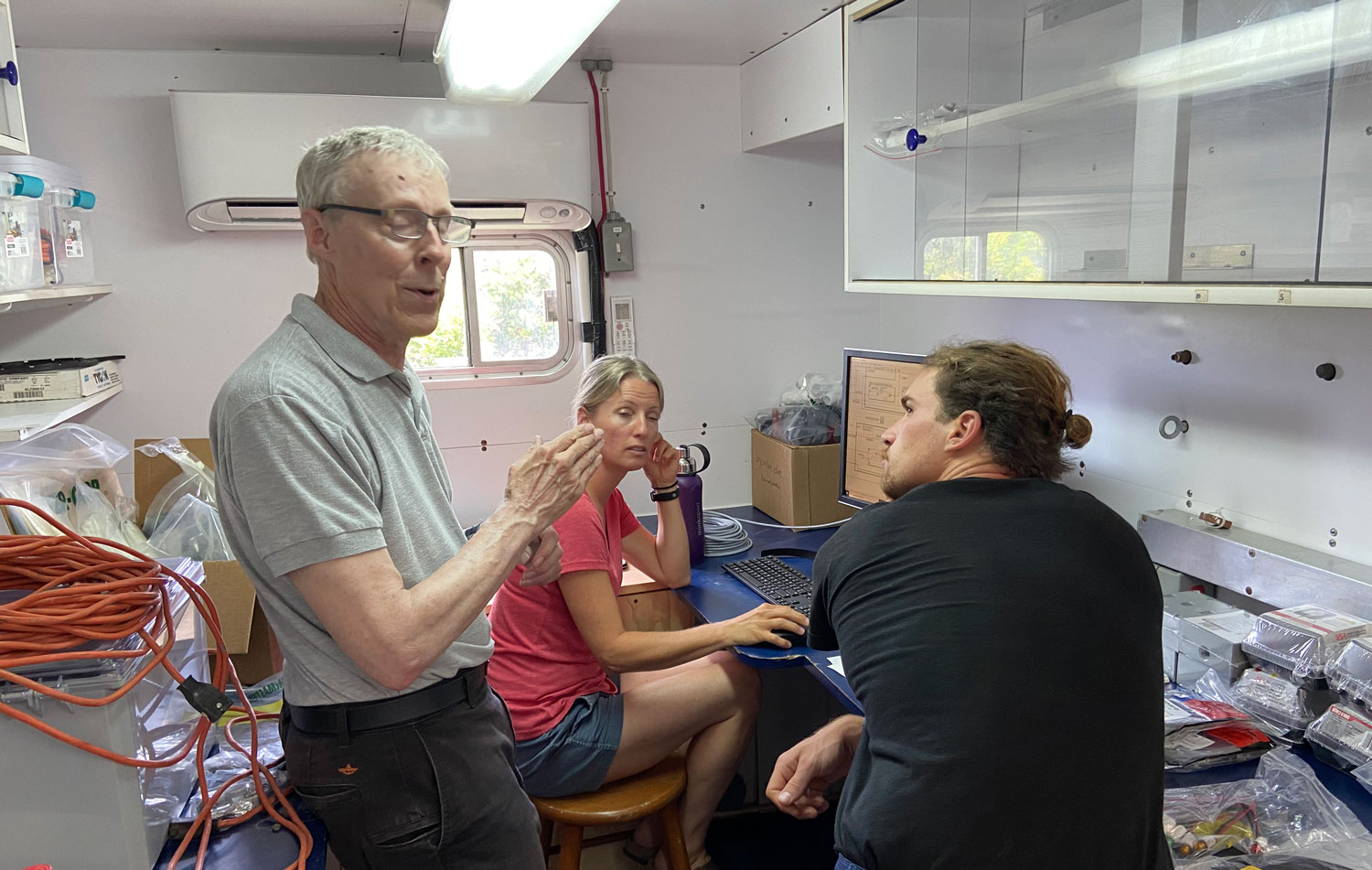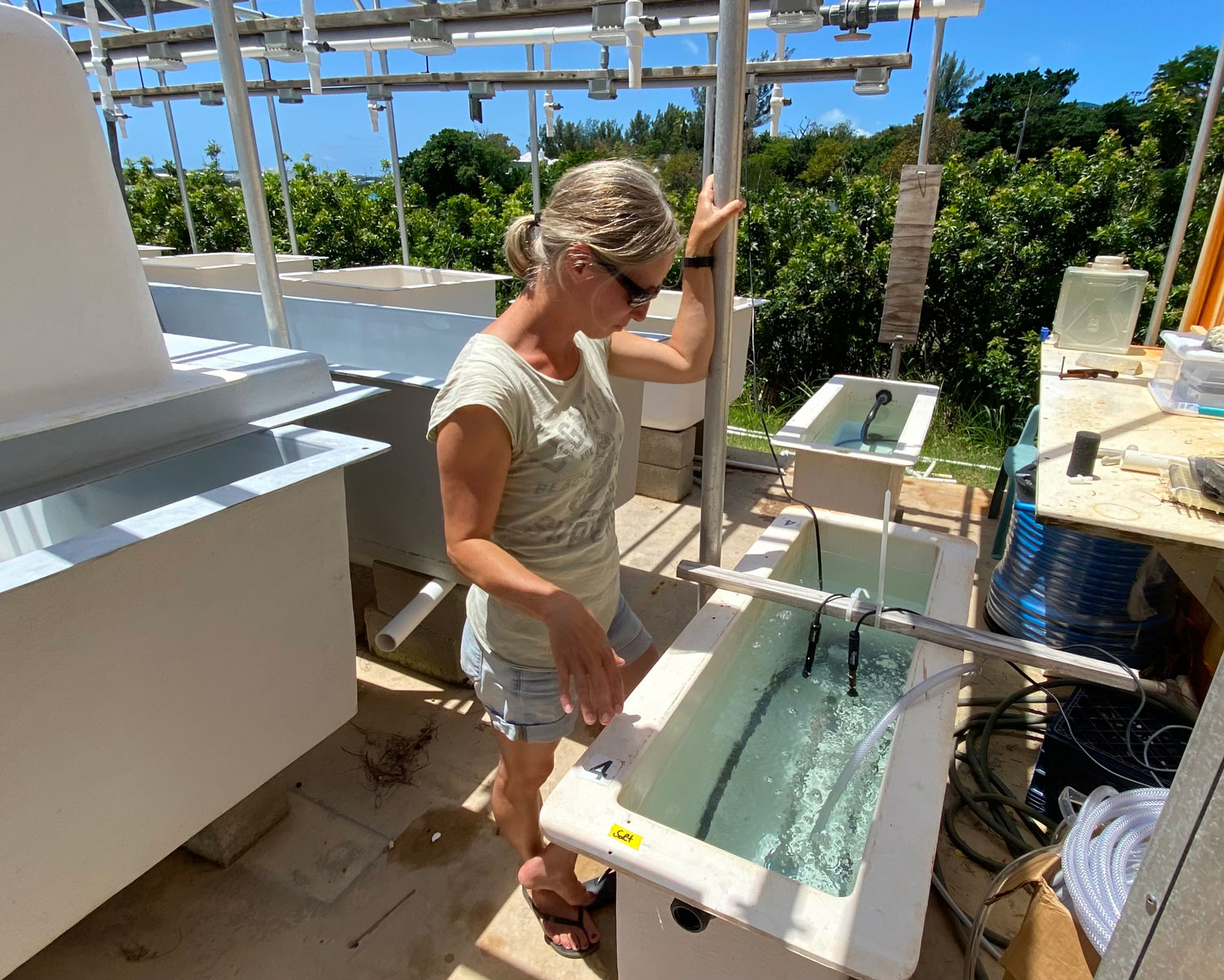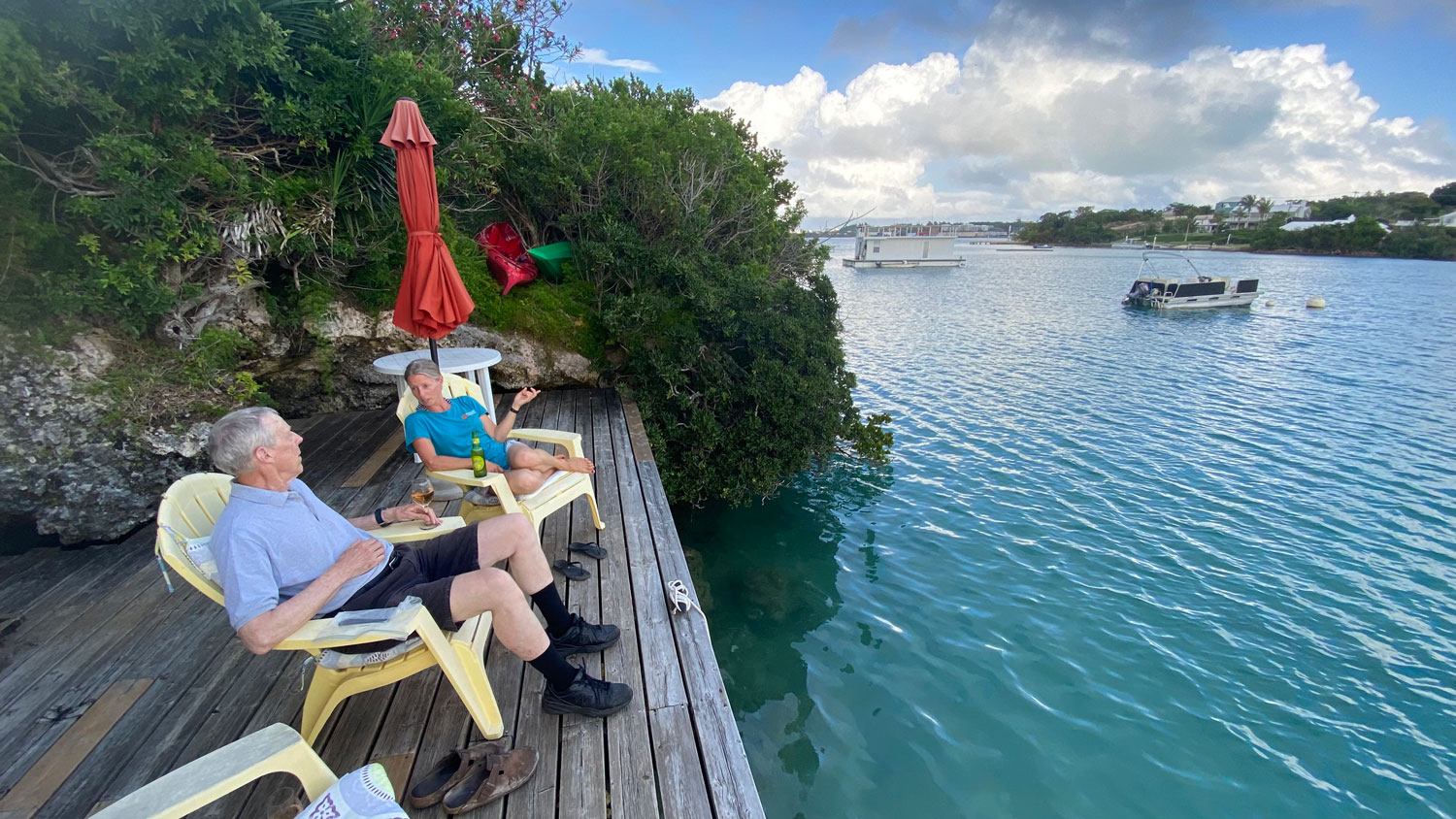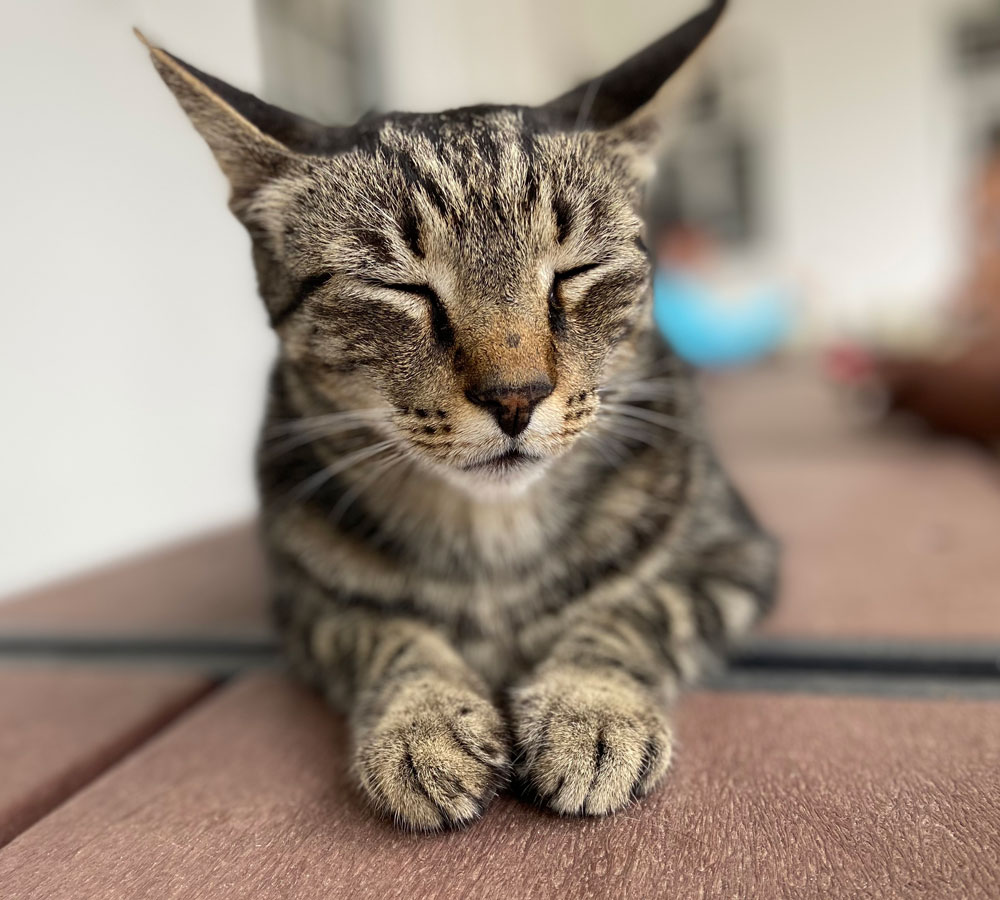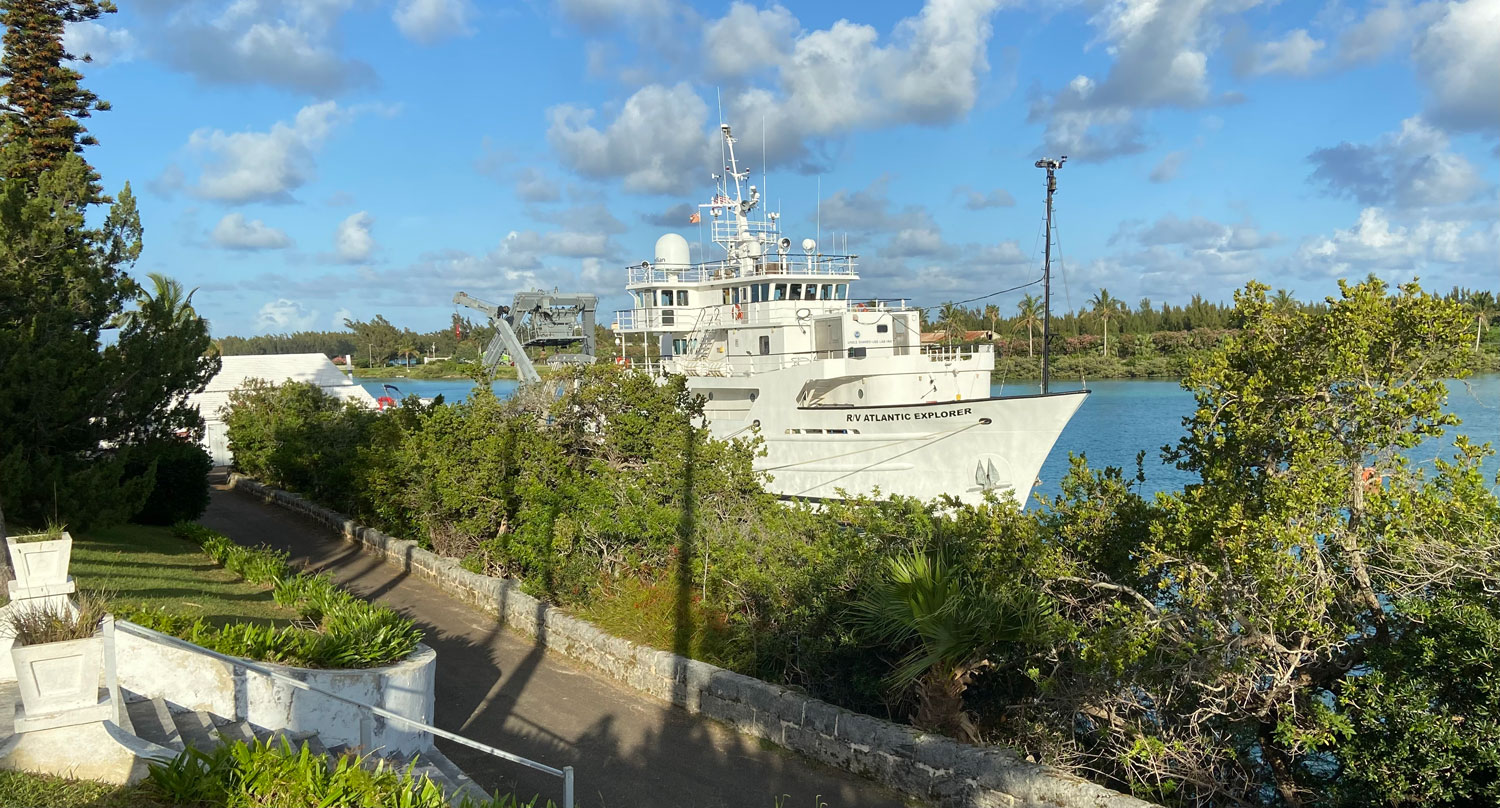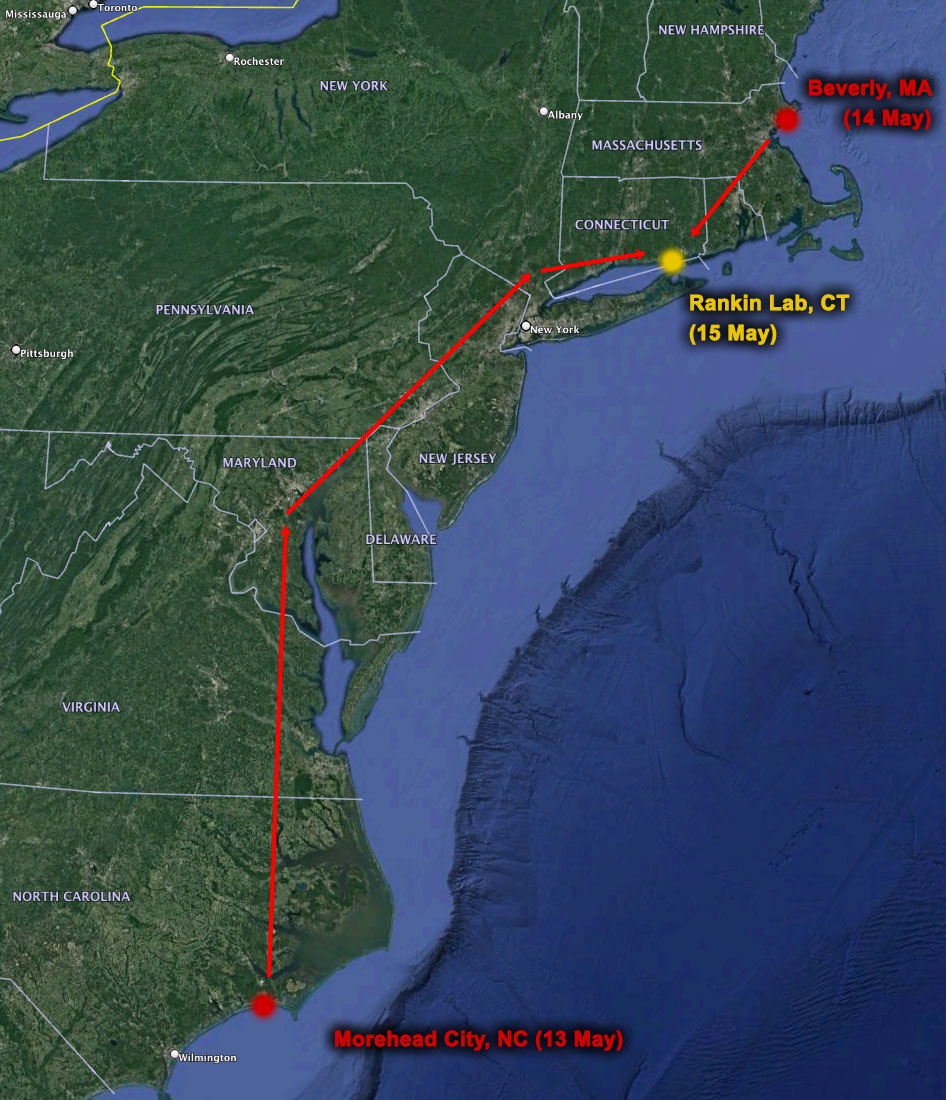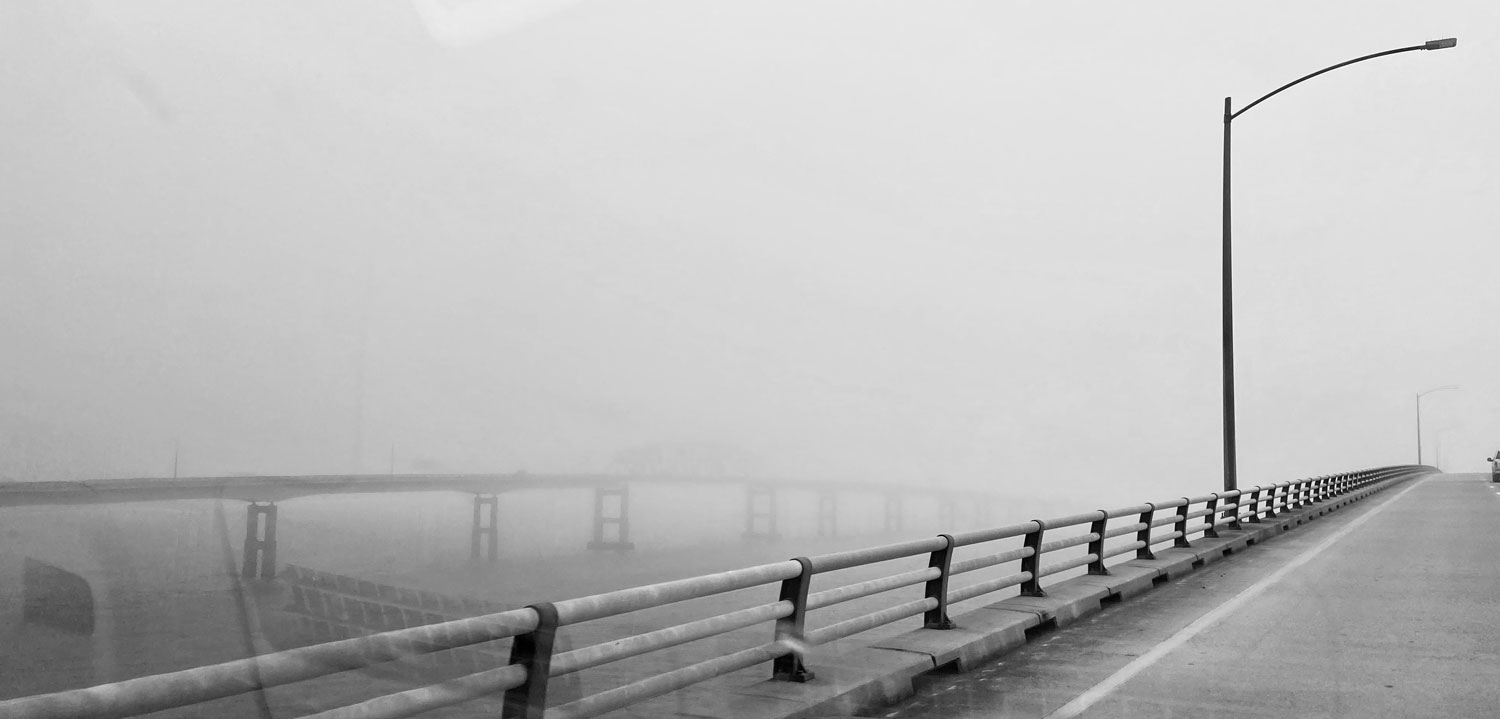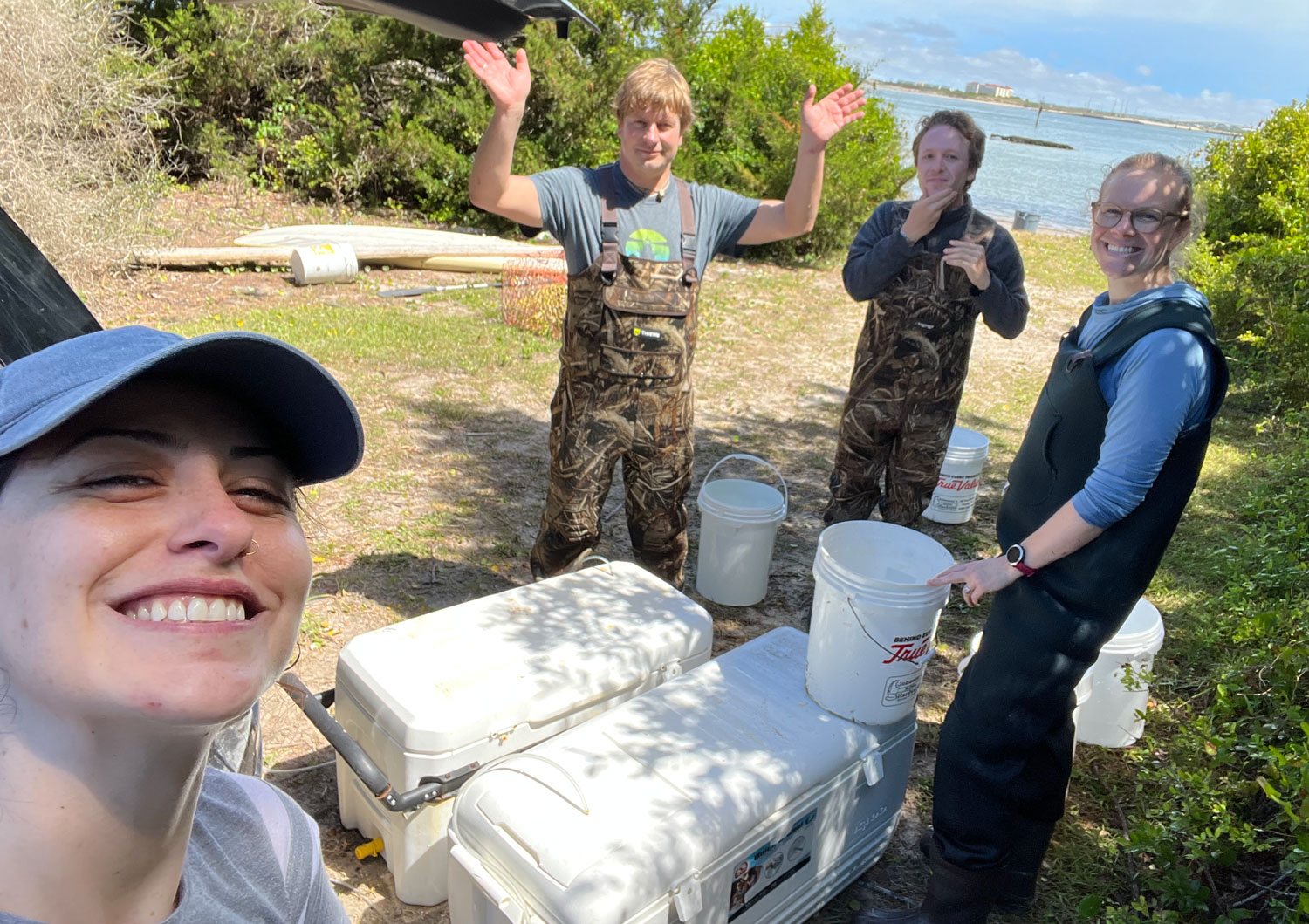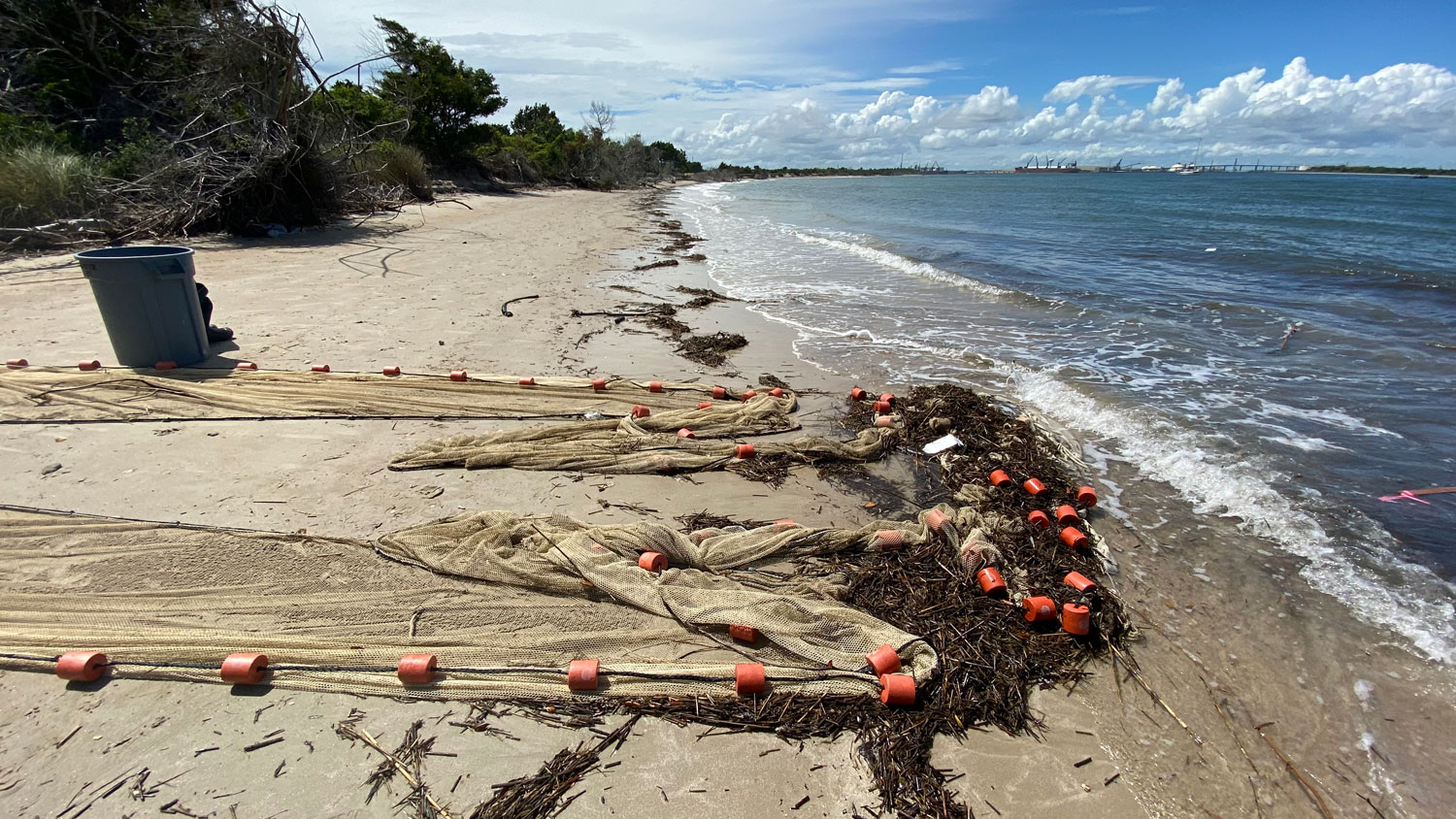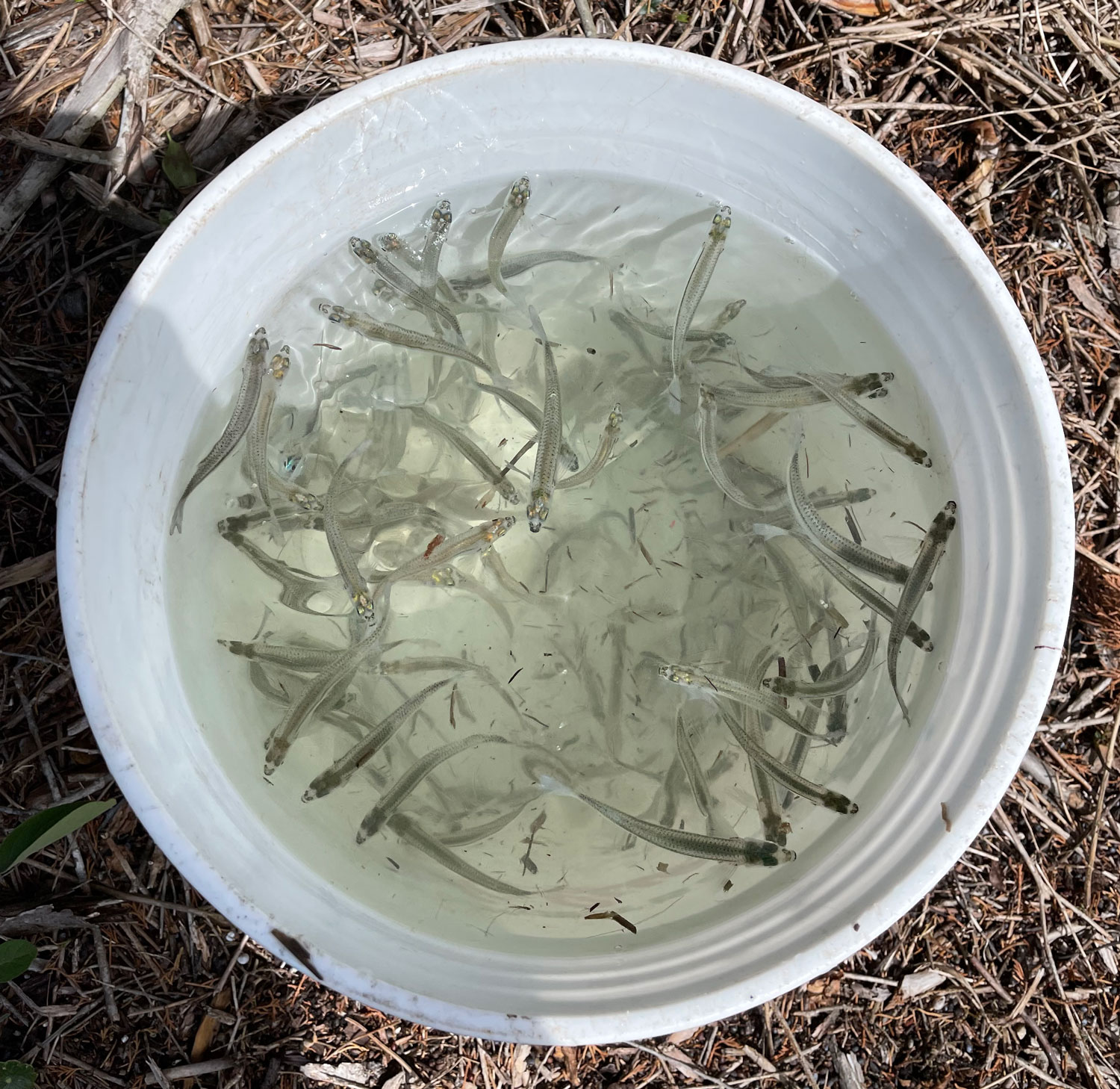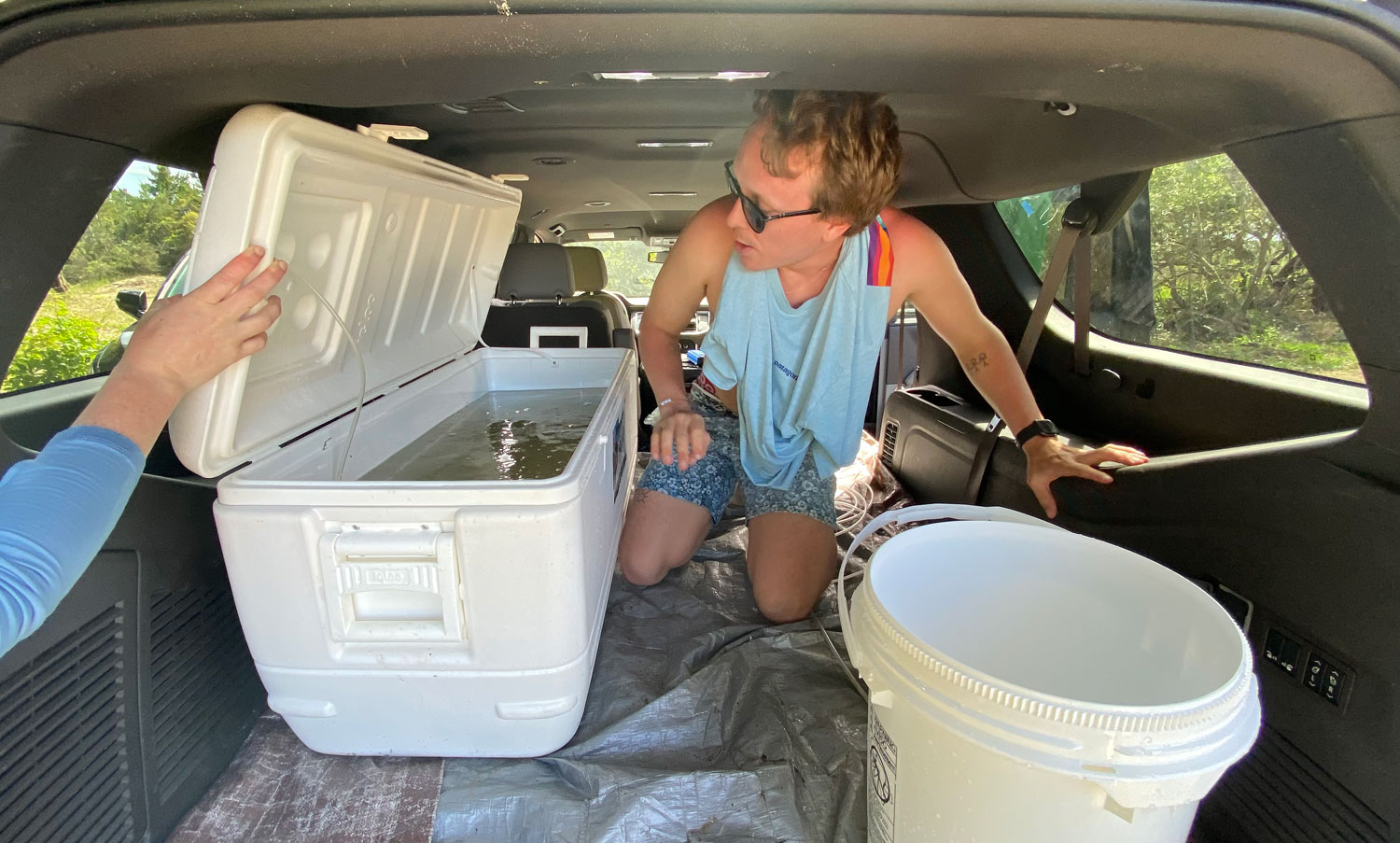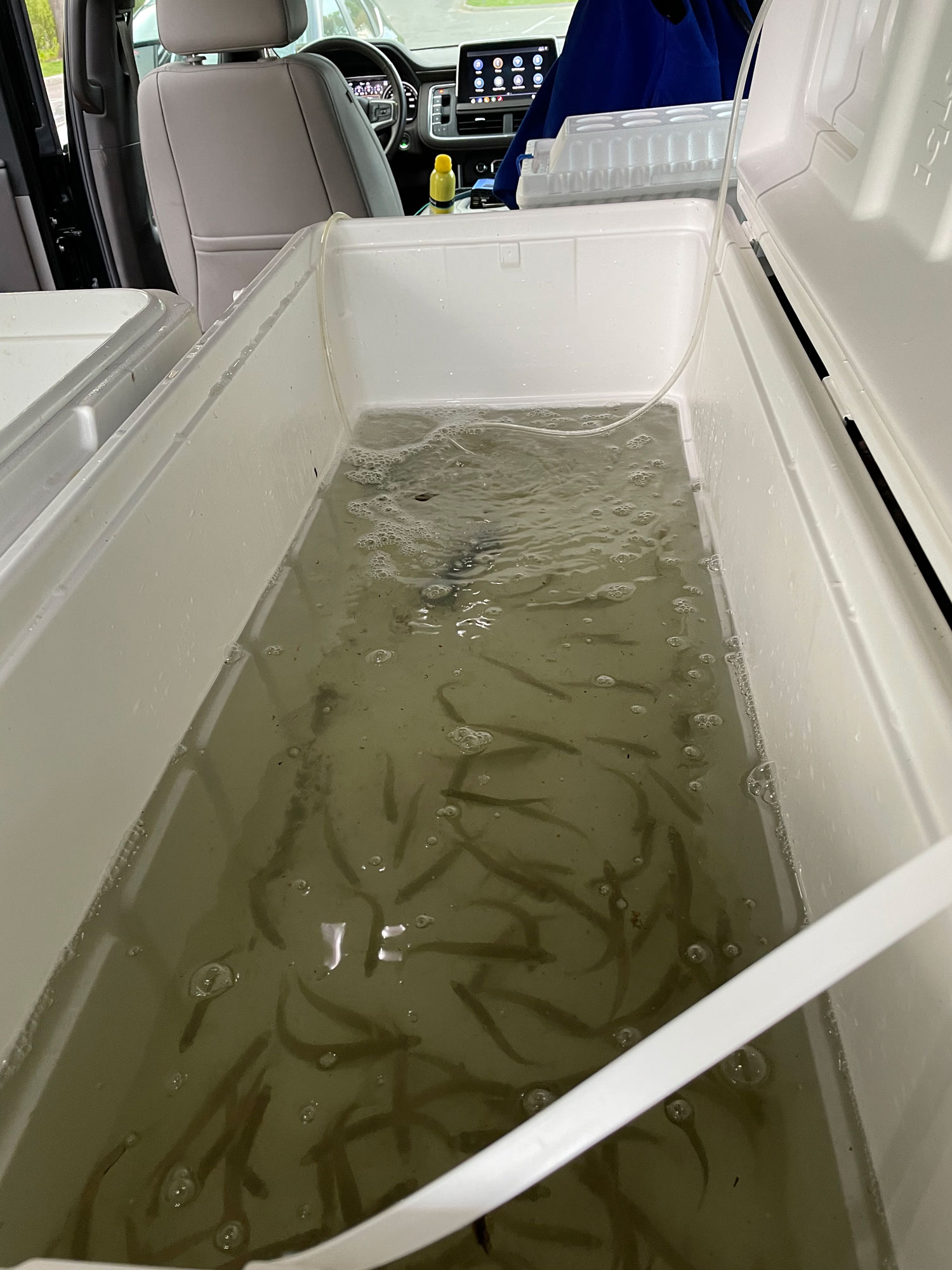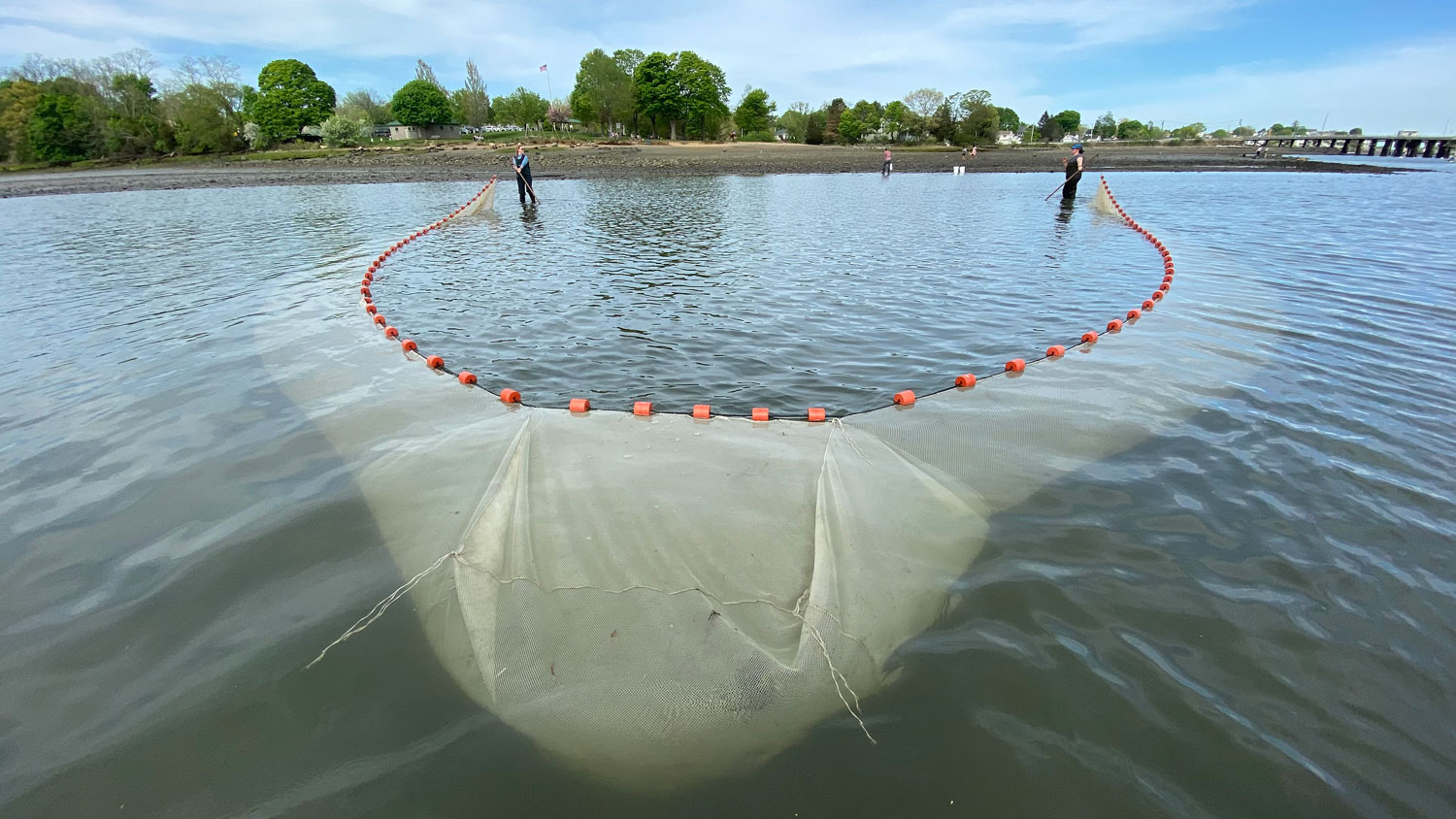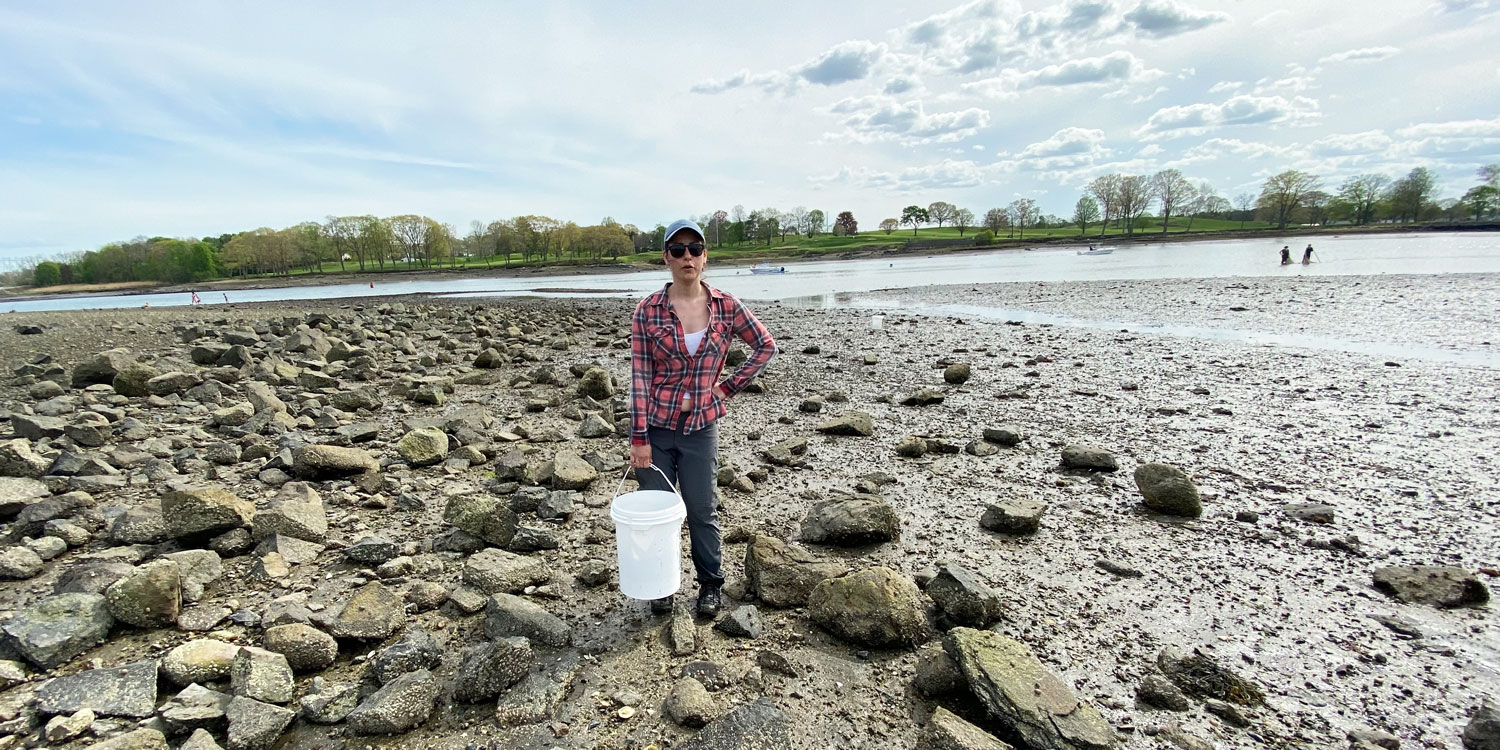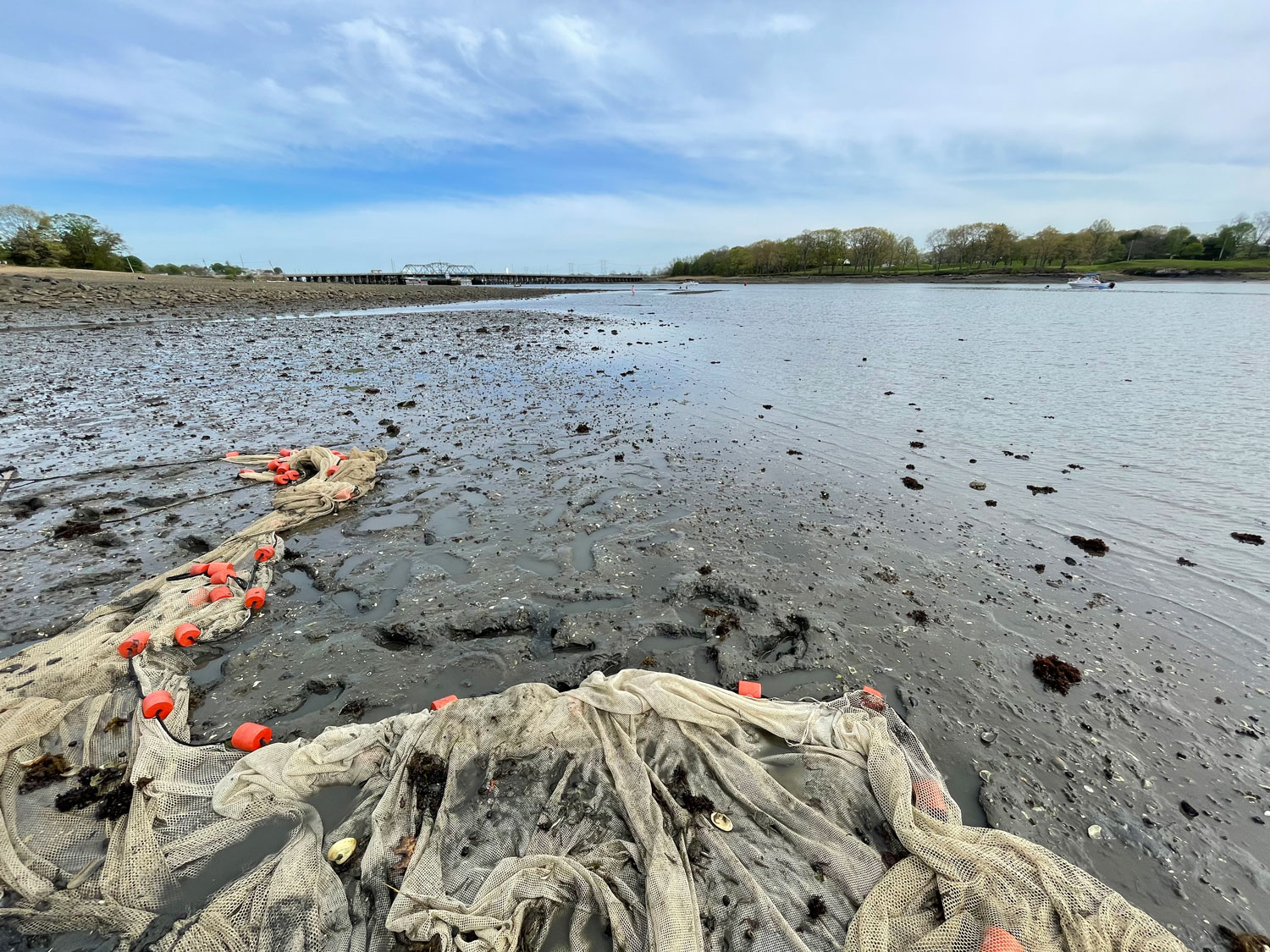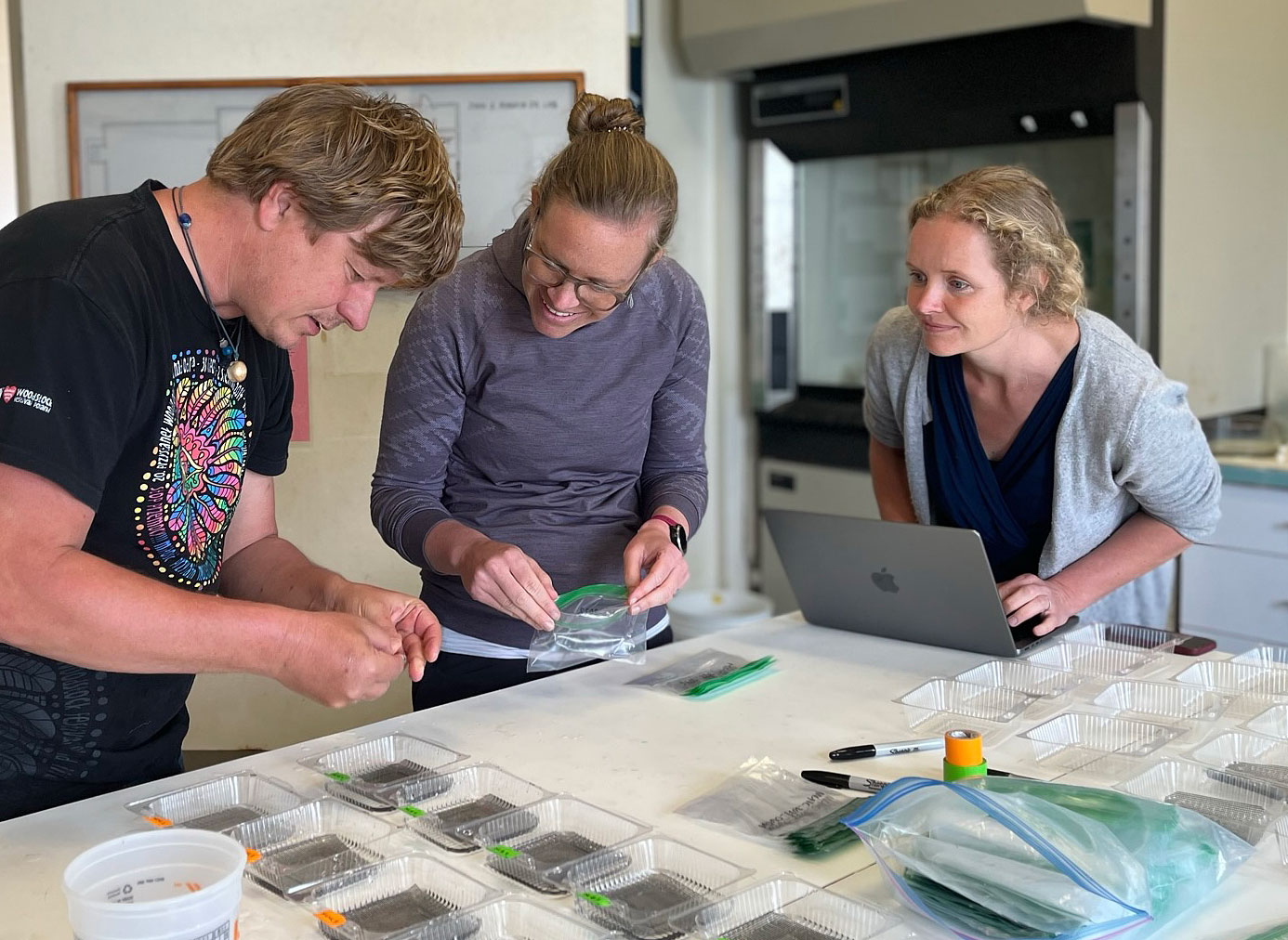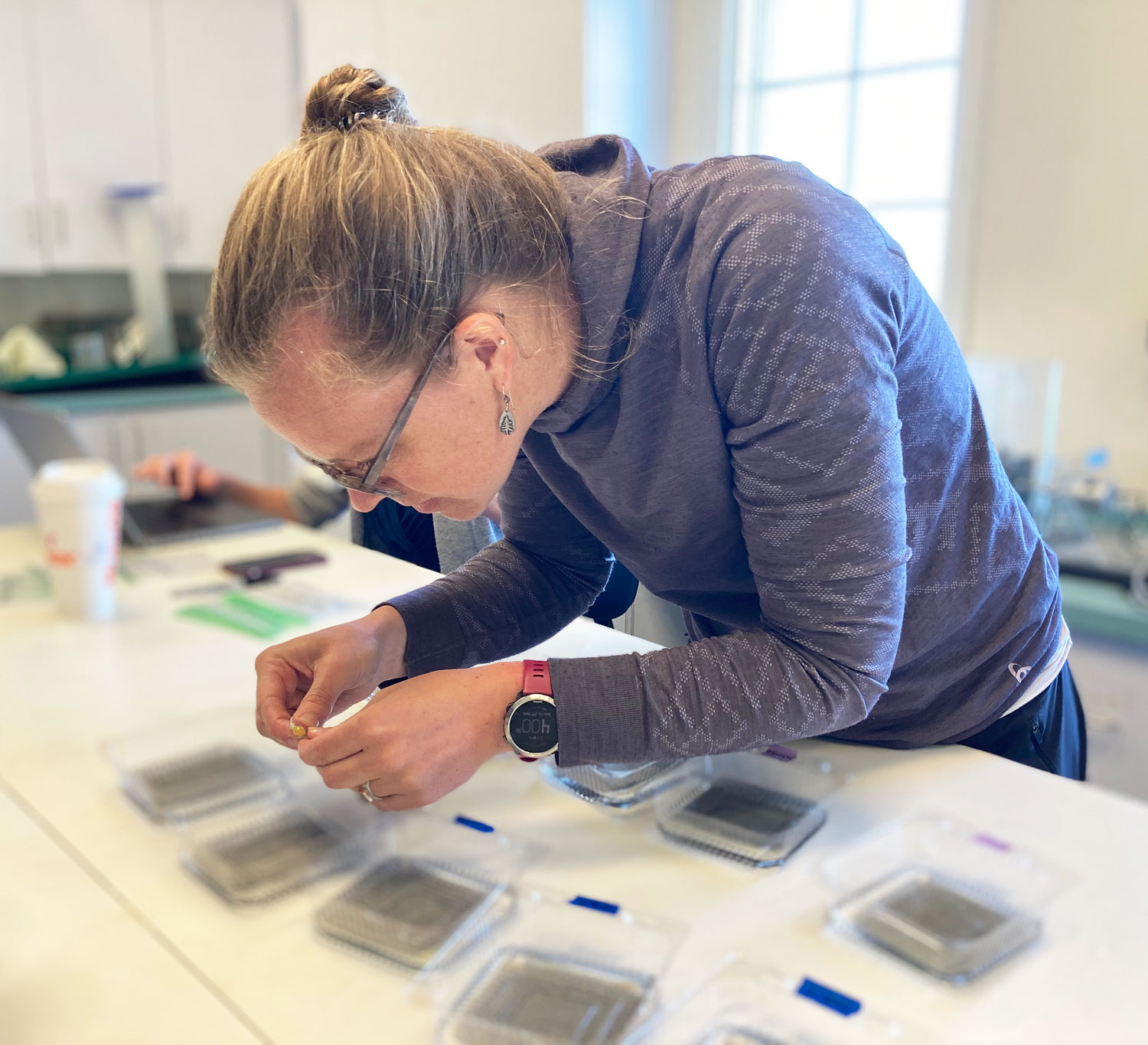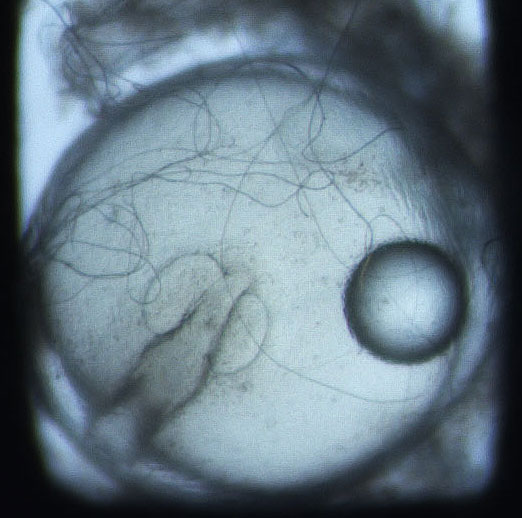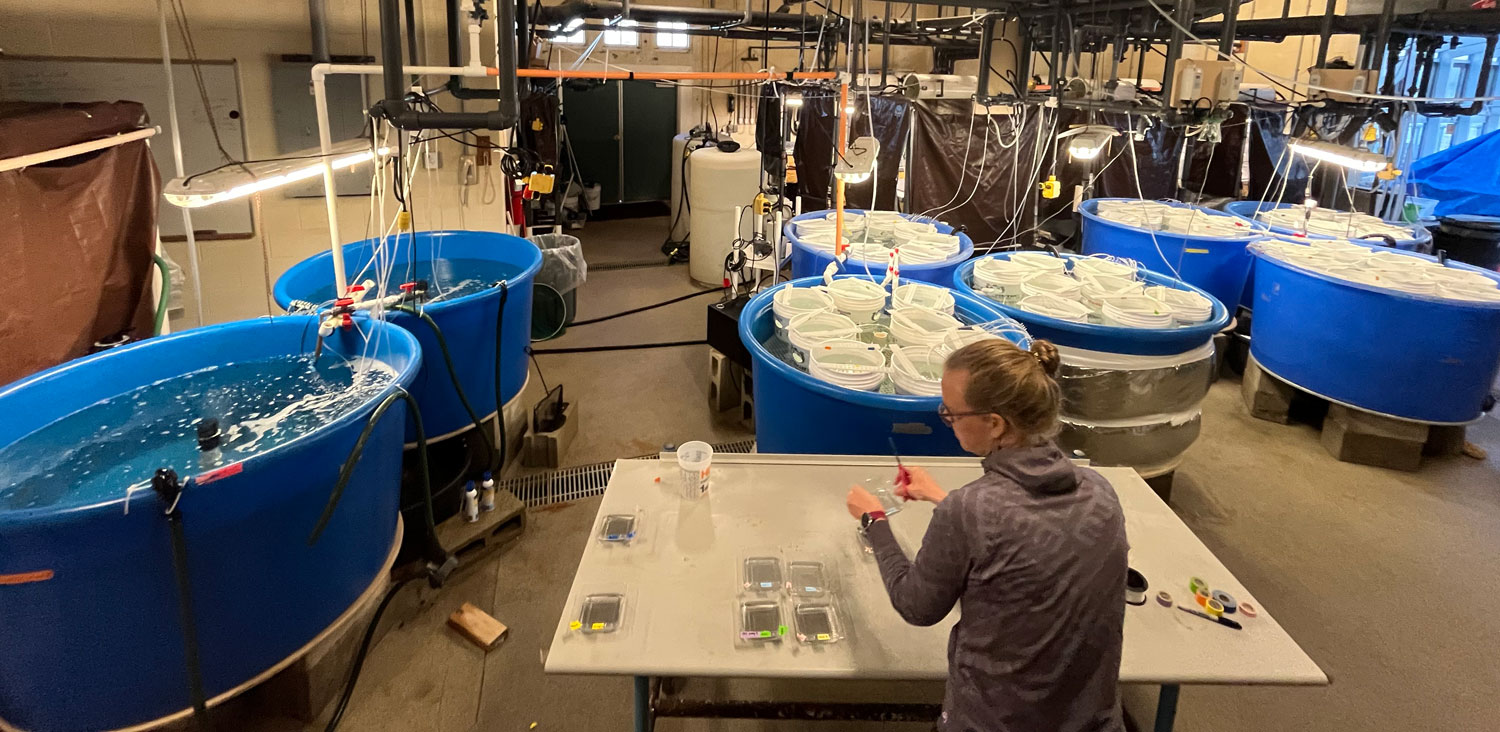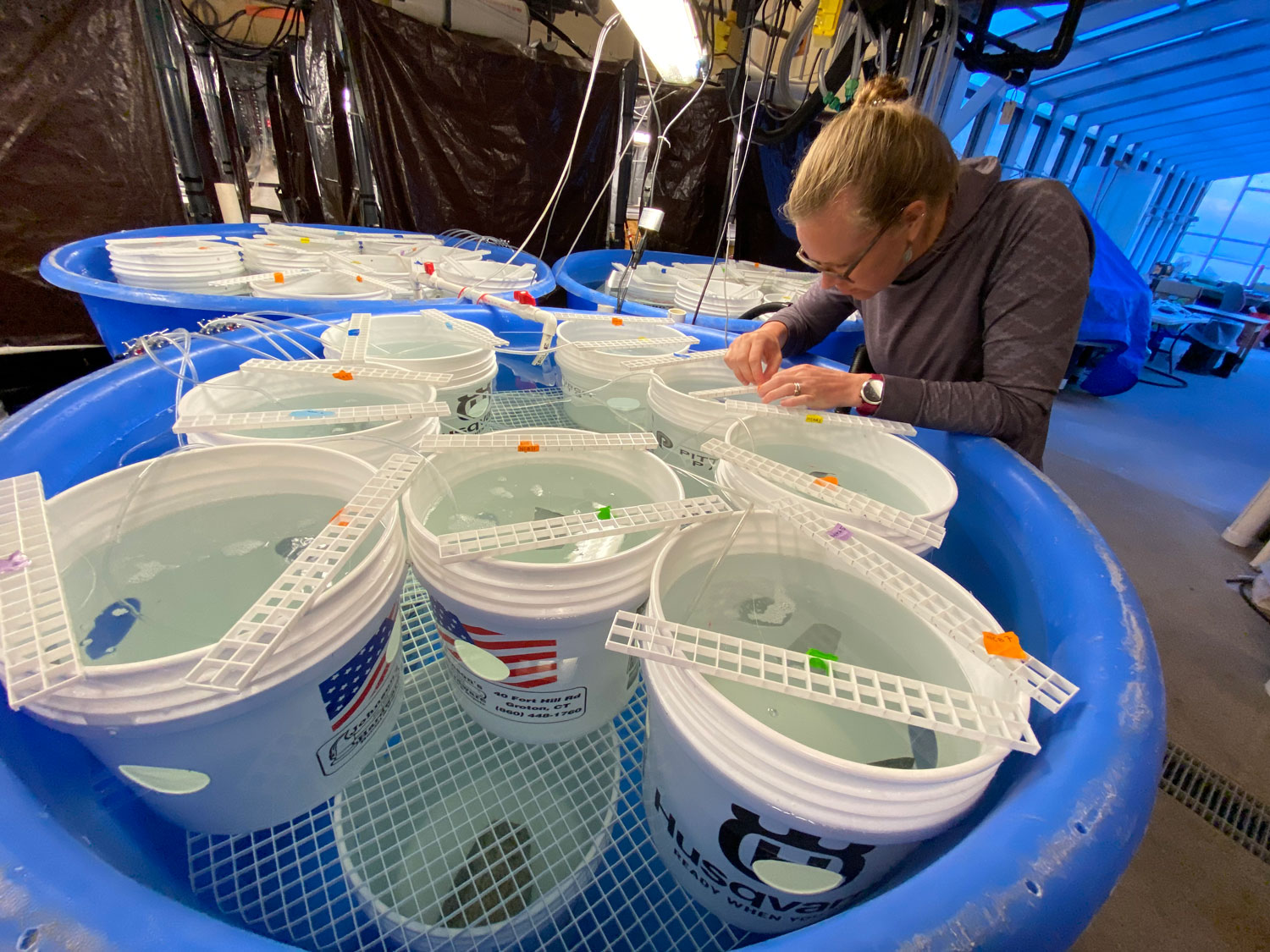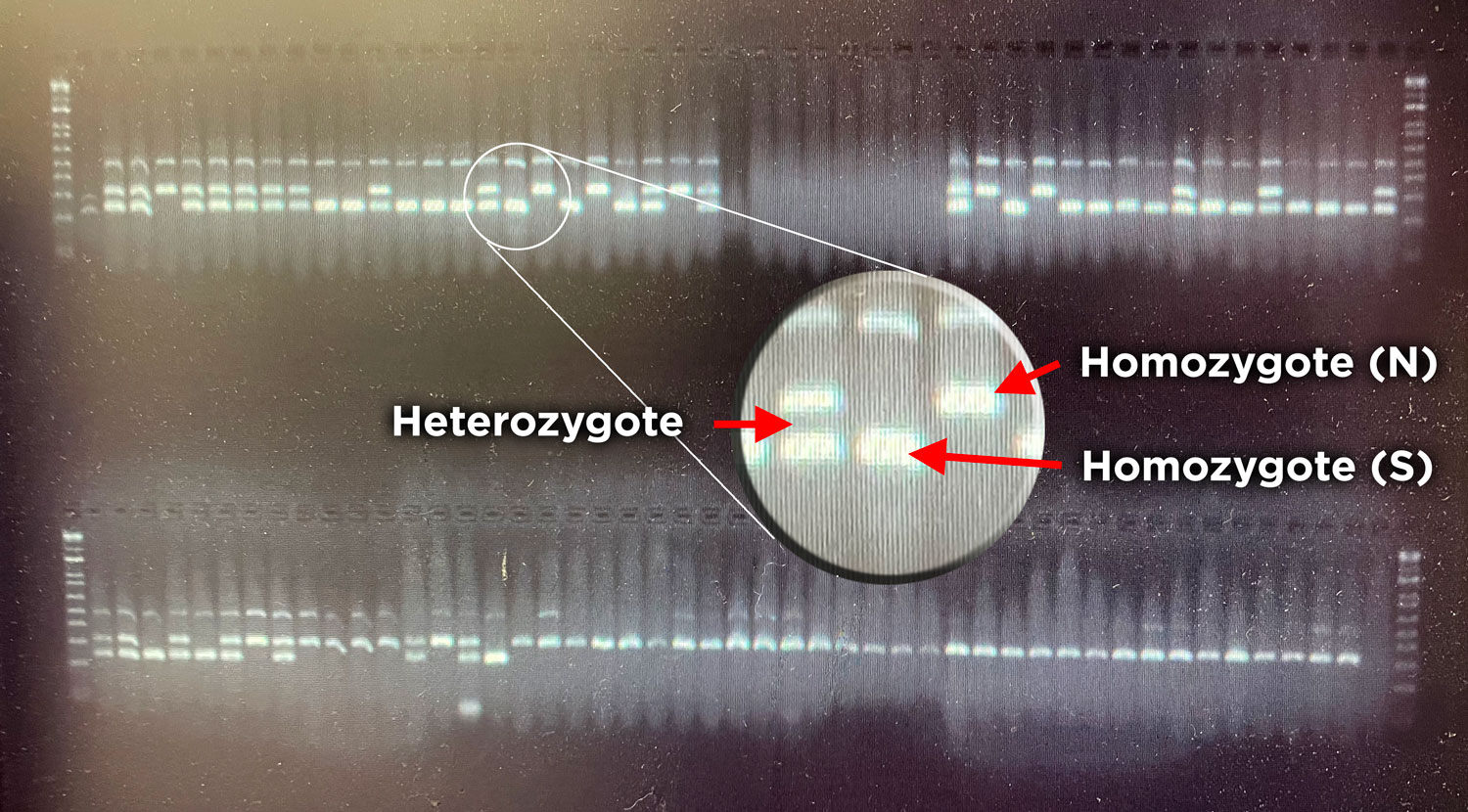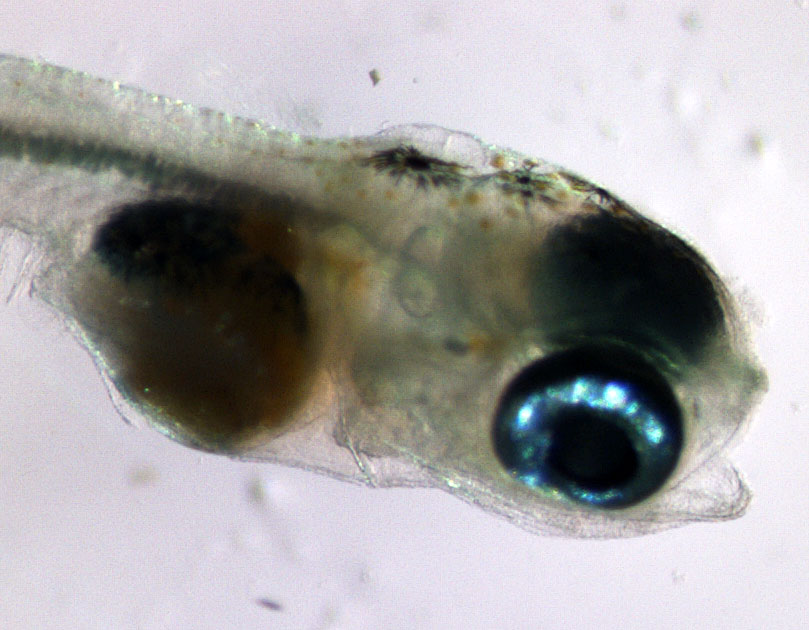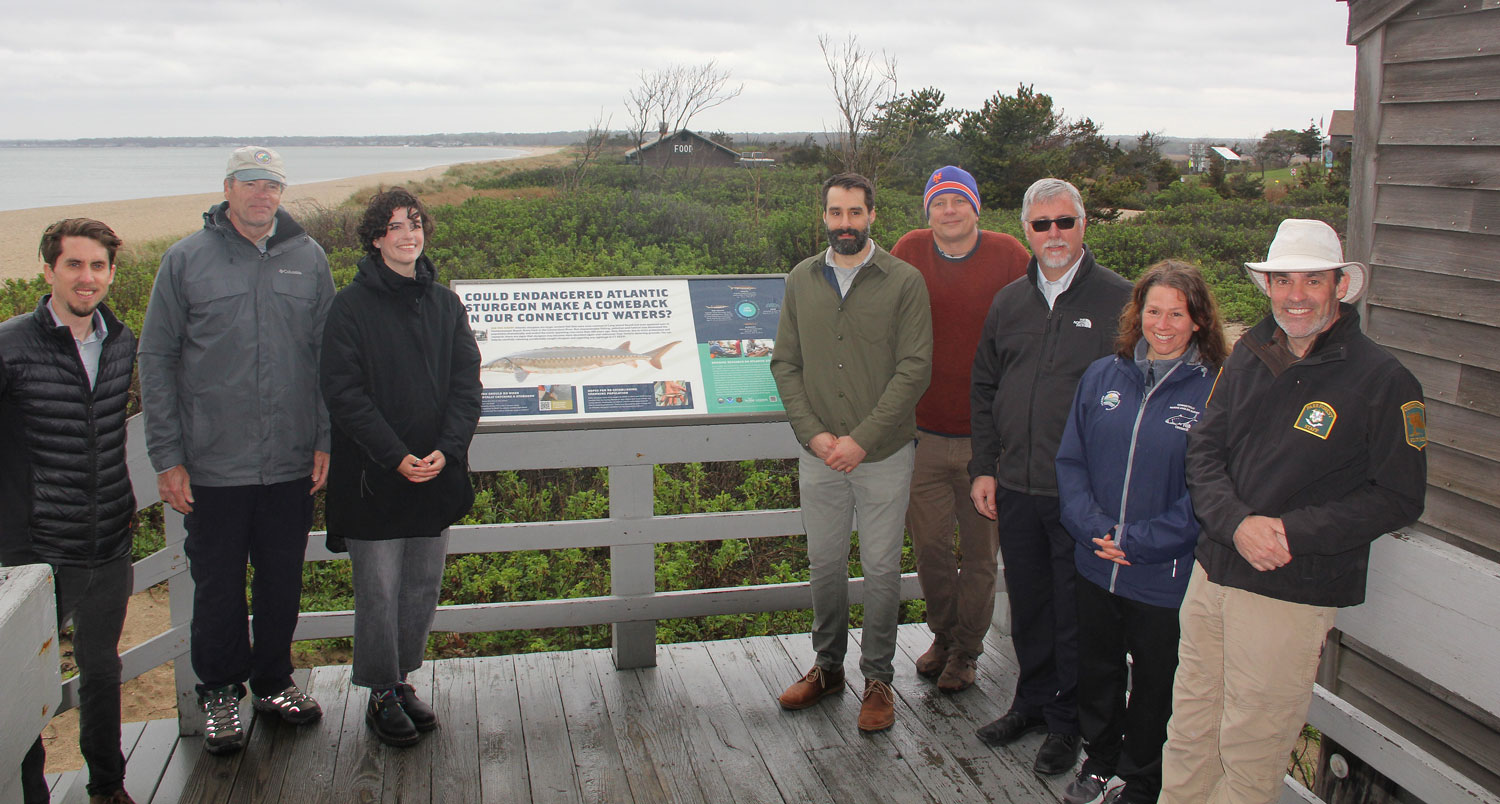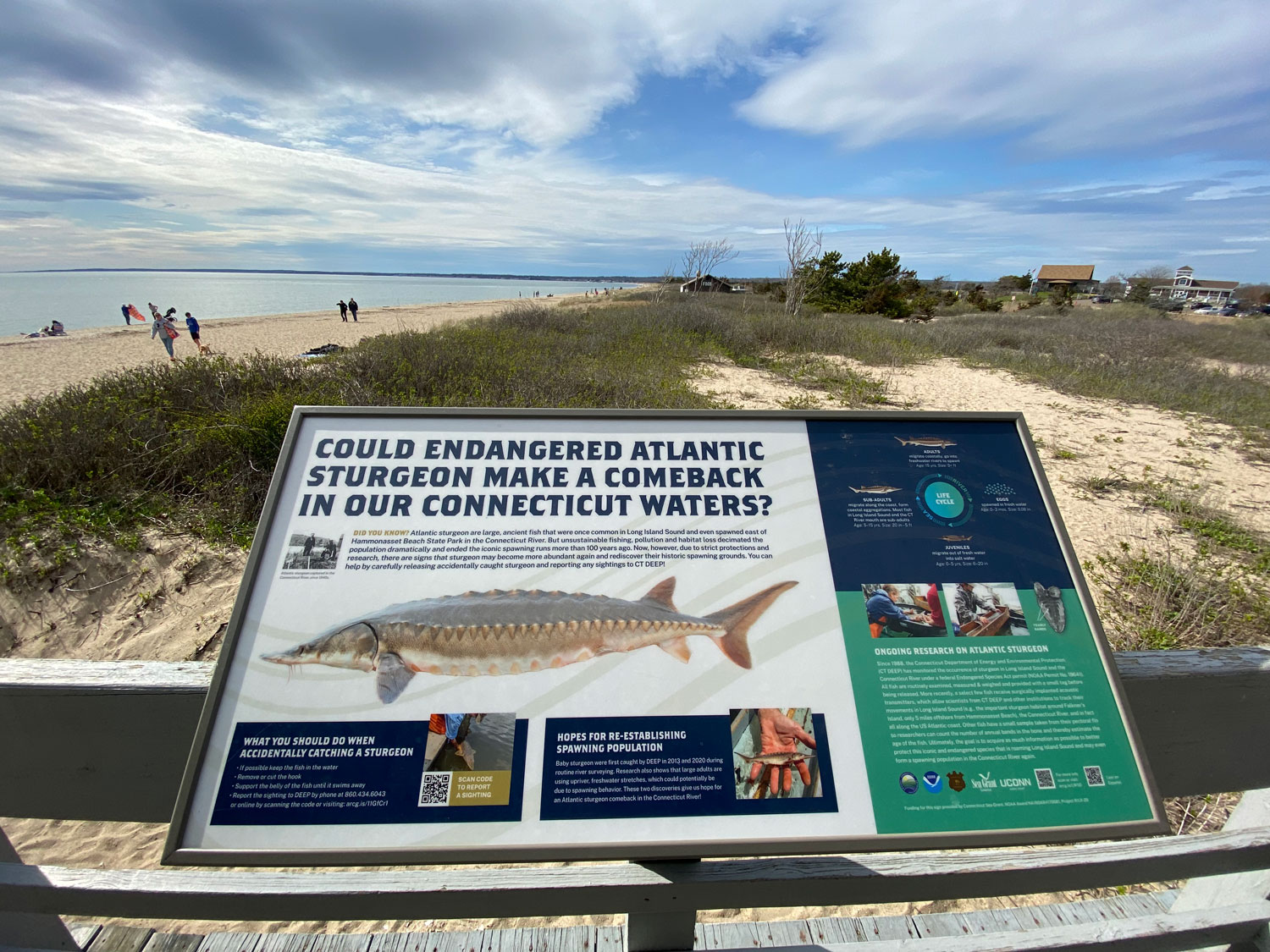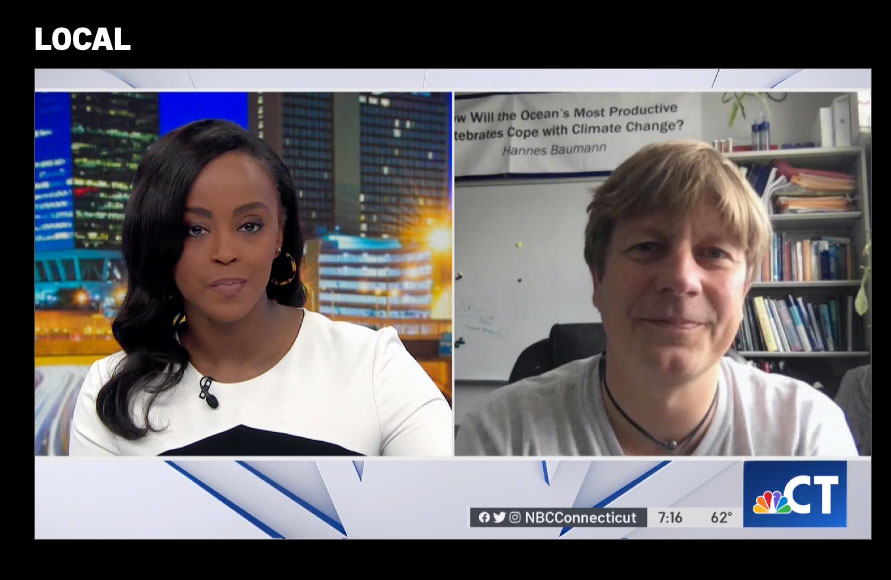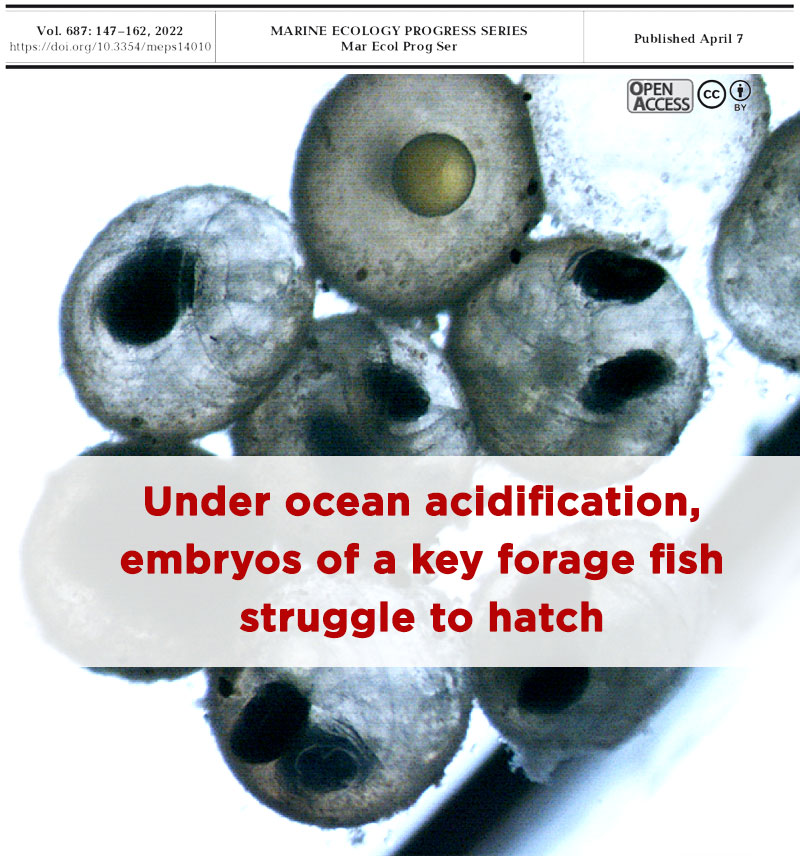5 December 2022. We are proud to announce that the ICES Journal of Marine Science just published our latest sand lance study! The work spearheaded by Lucas Jones and subject of his Masters thesis research has brought together a large, international group of collaborators to better understand the genetic relationships between disparate sand lance populations across their large geographical range. This is an Open Access publication that will hopefully be of use to researchers studying sand lance everywhere.
- Jones, L.F., Lou, R.N., Murray, C.S., Robert, D., Bourne, C.M., Bouchard, C., Kučka, M., Chan, Y.F., Carlon, D.B., Wiley, D.N., Therkildsen, N.O., and Baumann, H. (2022) Two distinct population clusters of Northern sand lance (Ammodytes dubius) on the Northwest Atlantic shelf revealed by whole genome sequencing ICES Journal of Marine Science 80:122-132
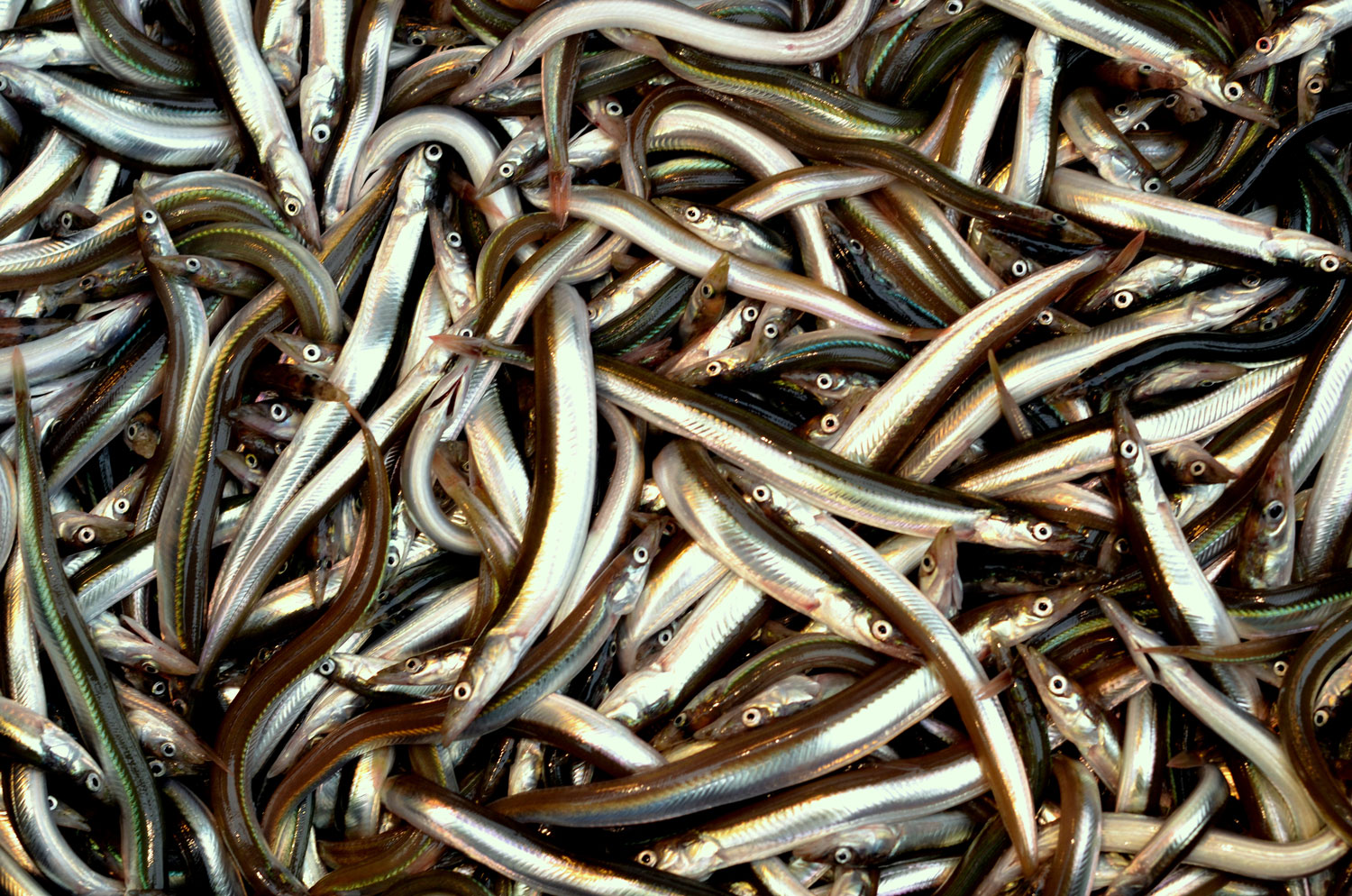
Press release. By Elaina Hancock
Genetic Barriers, a Warming Ocean, and the Uncertain Future for an Important Forage Fish
In the vast oceans, one would assume their inhabitants can travel far and wide and, as a result, populations of a species would mix freely. But this doesn’t appear to be the case for a vital forage fish called the sand lance.
Sand lance are small schooling fish impressively rich in lipids, which makes them a fantastic and significant food source for at least 70 different species ranging from whales and sharks to seabirds, says UConn Associate Professor of Marine Sciences Hannes Baumann.
The Northern sand lance can be found from the waters off New Jersey all the way north to Greenland. Researchers, including Baumann and Ph.D. student Lucas Jones, were interested to see if sand lance constitute a massive, homogenous population, or whether there are genetically distinct groups. Their findings are published in the ICES Journal of Marine Science.
Baumann explains these are important questions to answer when considering conservation and sustainable management of the species, especially since the regions where sand lance live are warming faster than many areas of the planet due to climate change.
Sampling fish from such a broad range is no small task, but two years ago, Baumann and Jones began reaching out to other researchers to see if they had tissue samples to spare. Baumann credits the work to the international group of colleagues who contributed samples including co-authors from Canada and Greenland, and who helped sequence and analyze the data including co-authors from Cornell University.
In all, Baumann, Jones, and the team were able to sequence and analyze nearly 300 samples from a variety of locations across the sand lance’s range using a technique called low-coverage whole genome sequencing. They also sequenced the first reference genome for sand lance.
In a nutshell, Baumann says they found an area on the Scotian Shelf, off the coast of Nova Scotia, where a genetic break occurs. The researchers distinguished two distinct groups, one north and one south of the divide, with parts of the genome differing quite dramatically – namely on chromosomes 21 and 24. Without obvious physical barriers like a mountain range separating the groups, Baumann says it’s logical to ask how these differences are possible.
“That is the scientific conundrum,” says Baumann, and the answer, it appears, lies in the currents.
“When fish from the north reproduce and drift south, they are genetically less adapted to warmer southern waters, even if it’s five or six degrees warmer in the winter, they are just not surviving,” Baumann says. “These populations may be linked by the ocean currents, but the realized connectivity is basically zero.”
Separation of 3 sand lance species based nuclear and mitochondrial DNA (Jones et al. ICES JMS 2022)

This finding is a first for the sand lance, but it has been shown in other species such as lobsters, cod, and scallops, and this research adds further evidence to an apparent temperature divide at the Scotian Shelf, and helps demonstrate that temperature is an important factor in survival.
“Example after example shows that the ocean is not as homogeneous a place as expected, and there are all kinds of things that prevent that constant mixing,”Baumann says. “We found another striking example of that.”
When researchers find adaptation in an environment where mixing is continuous, like in the ocean, Baumann says, the question is how it is possible that groups stay different, even though they are constantly encountering other genotypes. That is where powerful genomic methods, like the ones used in this paper, come in handy.
“Parts of the genome in many species have what we call a ‘genetic inversion,’ which means that the genes on the chromosome from one parent have a certain order and the genes on the same chromosome that come from the other parent that code for the same thing, and they’re the same area, but they’re flipped,” Baumann says.
These inversions mean recombination cannot occur; therefore, the genes are passed down through the generations and play an important role in adaptation.
“We discovered on chromosomes 21 and 24 there are whole regions that are completely different and that is like the trademark signature of what we call an inversion because there’s no recombination going on.”
Baumann says that knowing there are genetic and ecological barriers on the Scotian Shelf is important, because with climate change, this barrier may move north and while that may be good news for southern fish, it’s bad news for the fish currently there.
The researchers were also a little relieved in finding two clusters, because had there been many smaller clusters, it could make management and conservation more challenging, especially considering scenarios like the construction of offshore wind parks. Areas potentially well situated for wind turbines can also be habitats for sand lance, and construction disrupts habitats. If there were many, smaller population clusters, a single construction project could pose the risk of completely wiping out a cluster, whereas with more widely dispersed populations, though the local population may be temporarily disturbed, it will not be long before they are able to re-establish after construction is completed.
Baumann plans to focus further research on studying the genetic basis of the thermal divide.
“We want to make sure that this fish is productive and resilient, despite climate change, so we should make sure these areas where they are occurring are protected,” Bauman says. “These decisions should include experts to ensure if there’s an area that is very critical to sand lance, that any disturbance is temporary.”
It isn’t an unsolvable conflict, but it is something that we need to do, says Baumann, who also notes that it is possible that sand lance north of the thermal divide are already suffering more from warming because the region is warming faster.
“It could be that these two clusters have different vulnerabilities to climate change,” he says. “We don’t know that yet but that’s something that should be pursued.”

